The NFL's inaugural draft – or as it was known back then, The Annual Selection Meeting – was held in 1936, and that means the Steelers have participated in 80 of these exercises so far. This series will look at the best of the all-time Steelers' draft picks, based on the round the players were selected.
Today's installment looks at the history of Round 1:
Who's on your Steelers #UltimateDraft board? Vote now for your chance to win great prizes!
1938 – BYRON "WHIZZER" WHITE: Convinced by Art Rooney Sr. to delay his Rhodes Scholarship to the University of Oxford by the then-outrageous sum of $10,000 to play a single season of professional football, White, a single-wing tailback, led the NFL in rushing attempts (152), yards (567), and yards from scrimmage (655) in 1938, but the Steelers finished 2-9. White's true impact came as the 12th-longest serving justice in U.S.
Who is your top draft pick in Steelers history from Round 1? Make your #UltimateDraft pick now!
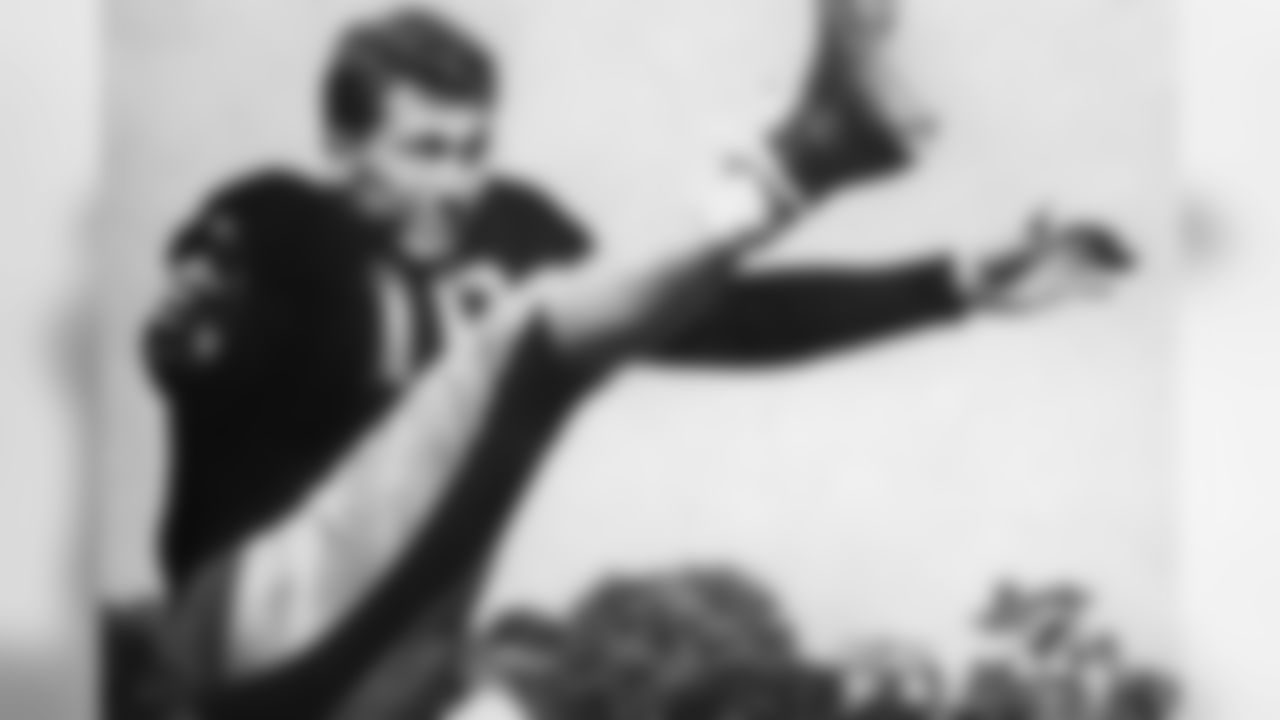
1938 BYRON WHIZZER WHITE: Convinced to delay his Rhodes Scholarship to the University of Oxford by the then-outrageous sum of $10,000 to play professional football, White, a single-wing tailback, led the NFL in rushing attempts (152), yards (567), and yards from scrimmage (655), but the Steelers finished 2-9. Whites true impact came as the 12th-longest serving justice in U.S. Supreme Court history. Appointed to the court by President John F. Kennedy in 1962, White retired in 1993. Of all the athletes I have known in my lifetime, I'd have to say Whizzer White came as close to anyone to giving 100 percent of himself when he was in competition, said Rooney.

1938 BYRON WHIZZER WHITE: Convinced to delay his Rhodes Scholarship to the University of Oxford by the then-outrageous sum of $10,000 to play professional football, White, a single-wing tailback, led the NFL in rushing attempts (152), yards (567), and yards from scrimmage (655), but the Steelers finished 2-9. Whites true impact came as the 12th-longest serving justice in U.S. Supreme Court history. Appointed to the court by President John F. Kennedy in 1962, White retired in 1993. Of all the athletes I have known in my lifetime, I'd have to say Whizzer White came as close to anyone to giving 100 percent of himself when he was in competition, said Rooney.

1938 BYRON WHIZZER WHITE: Convinced to delay his Rhodes Scholarship to the University of Oxford by the then-outrageous sum of $10,000 to play professional football, White, a single-wing tailback, led the NFL in rushing attempts (152), yards (567), and yards from scrimmage (655), but the Steelers finished 2-9. Whites true impact came as the 12th-longest serving justice in U.S. Supreme Court history. Appointed to the court by President John F. Kennedy in 1962, White retired in 1993. Of all the athletes I have known in my lifetime, I'd have to say Whizzer White came as close to anyone to giving 100 percent of himself when he was in competition, said Rooney.

1938 BYRON WHIZZER WHITE: Convinced to delay his Rhodes Scholarship to the University of Oxford by the then-outrageous sum of $10,000 to play professional football, White, a single-wing tailback, led the NFL in rushing attempts (152), yards (567), and yards from scrimmage (655), but the Steelers finished 2-9. Whites true impact came as the 12th-longest serving justice in U.S. Supreme Court history. Appointed to the court by President John F. Kennedy in 1962, White retired in 1993. Of all the athletes I have known in my lifetime, I'd have to say Whizzer White came as close to anyone to giving 100 percent of himself when he was in competition, said Rooney.

1938 BYRON WHIZZER WHITE: Convinced to delay his Rhodes Scholarship to the University of Oxford by the then-outrageous sum of $10,000 to play professional football, White, a single-wing tailback, led the NFL in rushing attempts (152), yards (567), and yards from scrimmage (655), but the Steelers finished 2-9. Whites true impact came as the 12th-longest serving justice in U.S. Supreme Court history. Appointed to the court by President John F. Kennedy in 1962, White retired in 1993. Of all the athletes I have known in my lifetime, I'd have to say Whizzer White came as close to anyone to giving 100 percent of himself when he was in competition, said Rooney.

1942 BILL DUDLEY: Since the NFL-AFL merger in 1970, the Pittsburgh Steelers have rushed for more yards than any other team in the league, and their edge is not insubstantial. So, who is the last Steelers back to lead the NFL in rushing? Wrong, it was Bill Dudley, a tailback in the teams single-wing offense during his era. Dudley led the NFL in rushing twice during his time with the Steelers, first as a rookie with 696 yards on 162 attempts, and then his 1946 season was an all-timer. In 1946, Dudley led the NFL in rushing (604 yards on 146 attempts), but he also led the NFL in punt returns (385 yards on 27 returns for a 14.3 average), and he led the NFL in interceptions (10 that he returned for 242 yards), and he led the NFL in fumble recoveries (seven). He also served as the teams punter with a 40.2 average, and he passed for 438 yards and two touchdowns. Hall of Fame, Class of 1966.
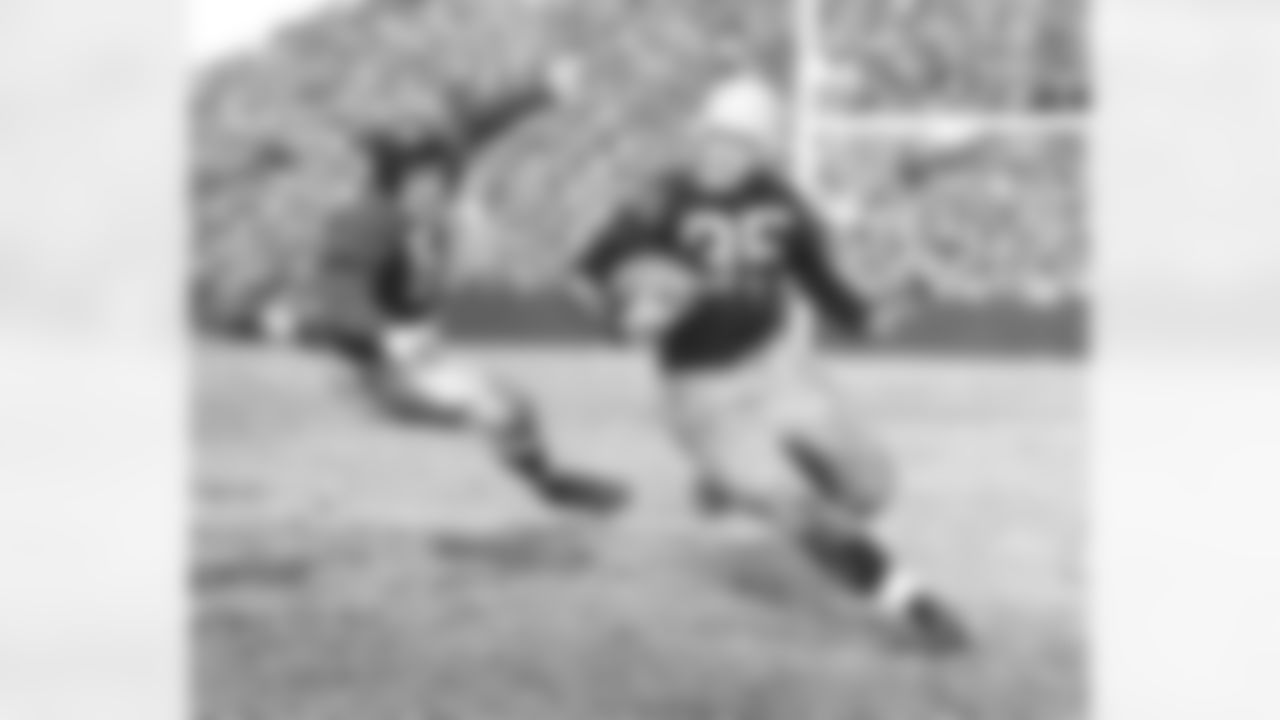
1942 BILL DUDLEY: Since the NFL-AFL merger in 1970, the Pittsburgh Steelers have rushed for more yards than any other team in the league, and their edge is not insubstantial. So, who is the last Steelers back to lead the NFL in rushing? Wrong, it was Bill Dudley, a tailback in the teams single-wing offense during his era. Dudley led the NFL in rushing twice during his time with the Steelers, first as a rookie with 696 yards on 162 attempts, and then his 1946 season was an all-timer. In 1946, Dudley led the NFL in rushing (604 yards on 146 attempts), but he also led the NFL in punt returns (385 yards on 27 returns for a 14.3 average), and he led the NFL in interceptions (10 that he returned for 242 yards), and he led the NFL in fumble recoveries (seven). He also served as the teams punter with a 40.2 average, and he passed for 438 yards and two touchdowns. Hall of Fame, Class of 1966.

1942 BILL DUDLEY: Since the NFL-AFL merger in 1970, the Pittsburgh Steelers have rushed for more yards than any other team in the league, and their edge is not insubstantial. So, who is the last Steelers back to lead the NFL in rushing? Wrong, it was Bill Dudley, a tailback in the teams single-wing offense during his era. Dudley led the NFL in rushing twice during his time with the Steelers, first as a rookie with 696 yards on 162 attempts, and then his 1946 season was an all-timer. In 1946, Dudley led the NFL in rushing (604 yards on 146 attempts), but he also led the NFL in punt returns (385 yards on 27 returns for a 14.3 average), and he led the NFL in interceptions (10 that he returned for 242 yards), and he led the NFL in fumble recoveries (seven). He also served as the teams punter with a 40.2 average, and he passed for 438 yards and two touchdowns. Hall of Fame, Class of 1966.
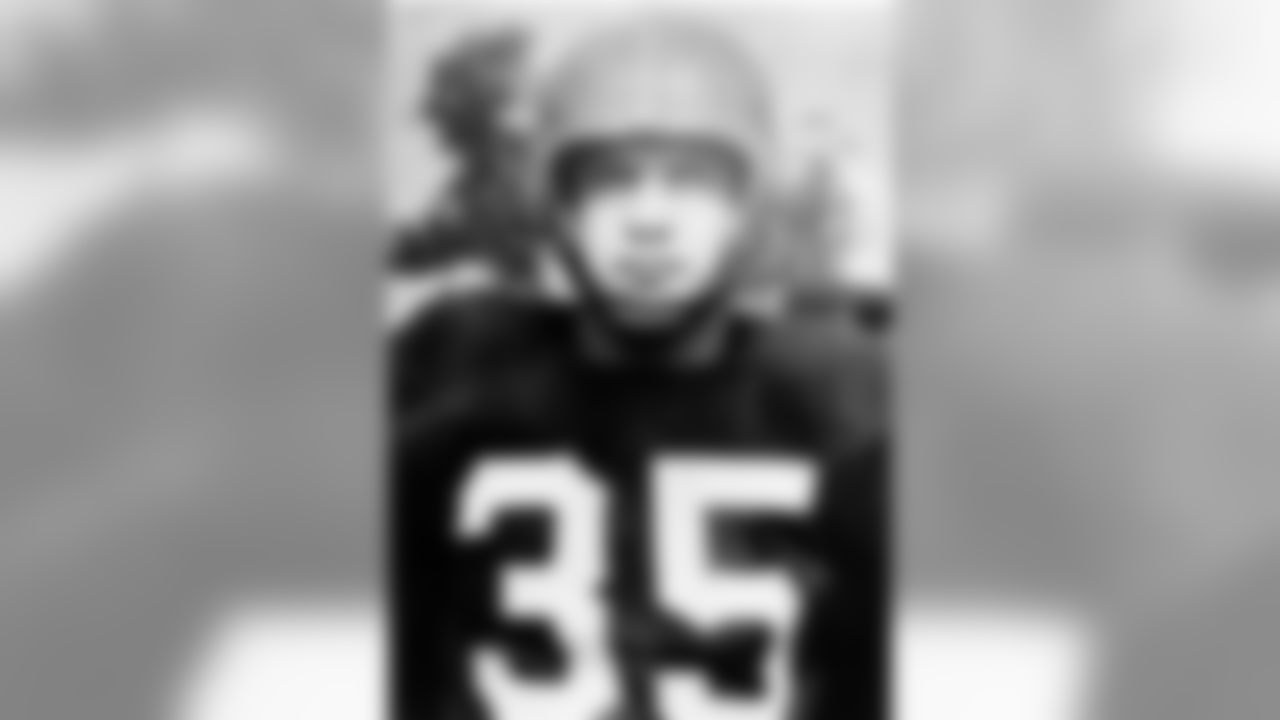
1942 BILL DUDLEY: Since the NFL-AFL merger in 1970, the Pittsburgh Steelers have rushed for more yards than any other team in the league, and their edge is not insubstantial. So, who is the last Steelers back to lead the NFL in rushing? Wrong, it was Bill Dudley, a tailback in the teams single-wing offense during his era. Dudley led the NFL in rushing twice during his time with the Steelers, first as a rookie with 696 yards on 162 attempts, and then his 1946 season was an all-timer. In 1946, Dudley led the NFL in rushing (604 yards on 146 attempts), but he also led the NFL in punt returns (385 yards on 27 returns for a 14.3 average), and he led the NFL in interceptions (10 that he returned for 242 yards), and he led the NFL in fumble recoveries (seven). He also served as the teams punter with a 40.2 average, and he passed for 438 yards and two touchdowns. Hall of Fame, Class of 1966.
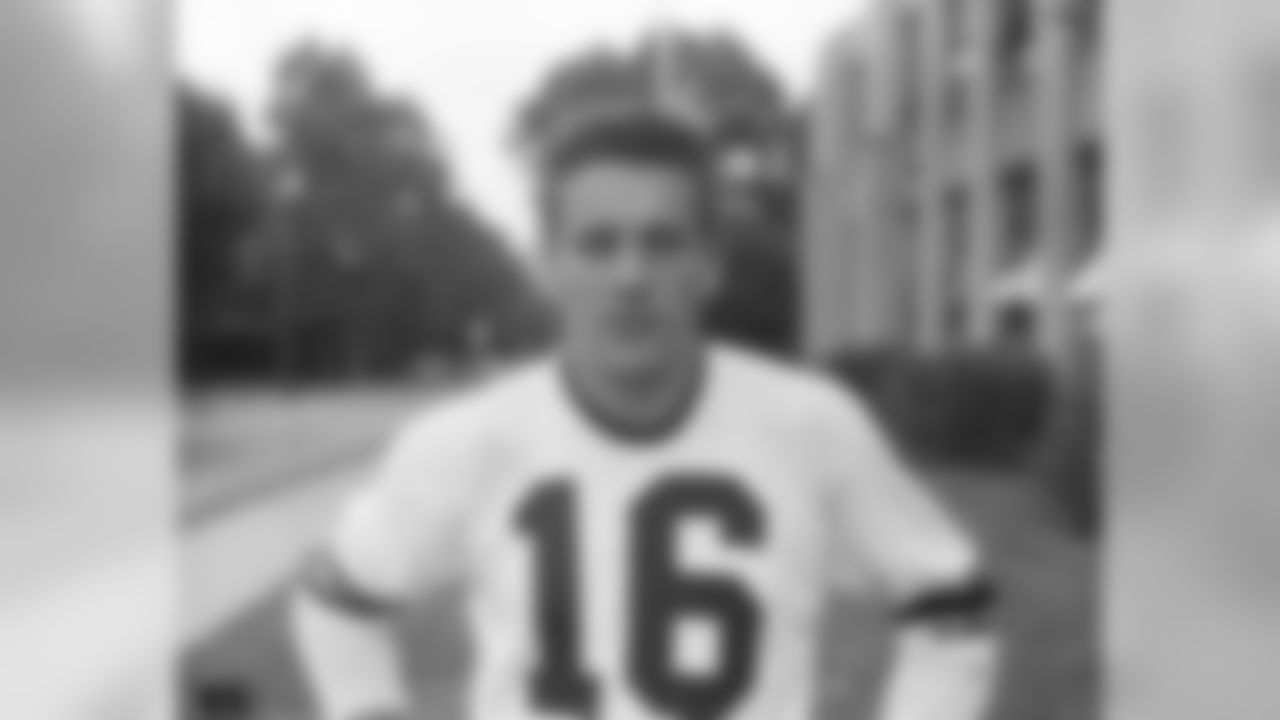
1957 LEN DAWSON: Back in this era, the Steelers did a better job of drafting than developing. In 1955, they had cut a quarterback they picked on the ninth-round named John Unitas; and in 1957, they would draft Dawson but cut him after three years and only 17 pass attempts. Unitas was inducted into the Hall of Fame in 1979. Dawson was inducted in 1987.

1957 LEN DAWSON: Back in this era, the Steelers did a better job of drafting than developing. In 1955, they had cut a quarterback they picked on the ninth-round named John Unitas; and in 1957, they would draft Dawson but cut him after three years and only 17 pass attempts. Unitas was inducted into the Hall of Fame in 1979. Dawson was inducted in 1987.

1957 LEN DAWSON: Back in this era, the Steelers did a better job of drafting than developing. In 1955, they had cut a quarterback they picked on the ninth-round named John Unitas; and in 1957, they would draft Dawson but cut him after three years and only 17 pass attempts. Unitas was inducted into the Hall of Fame in 1979. Dawson was inducted in 1987.
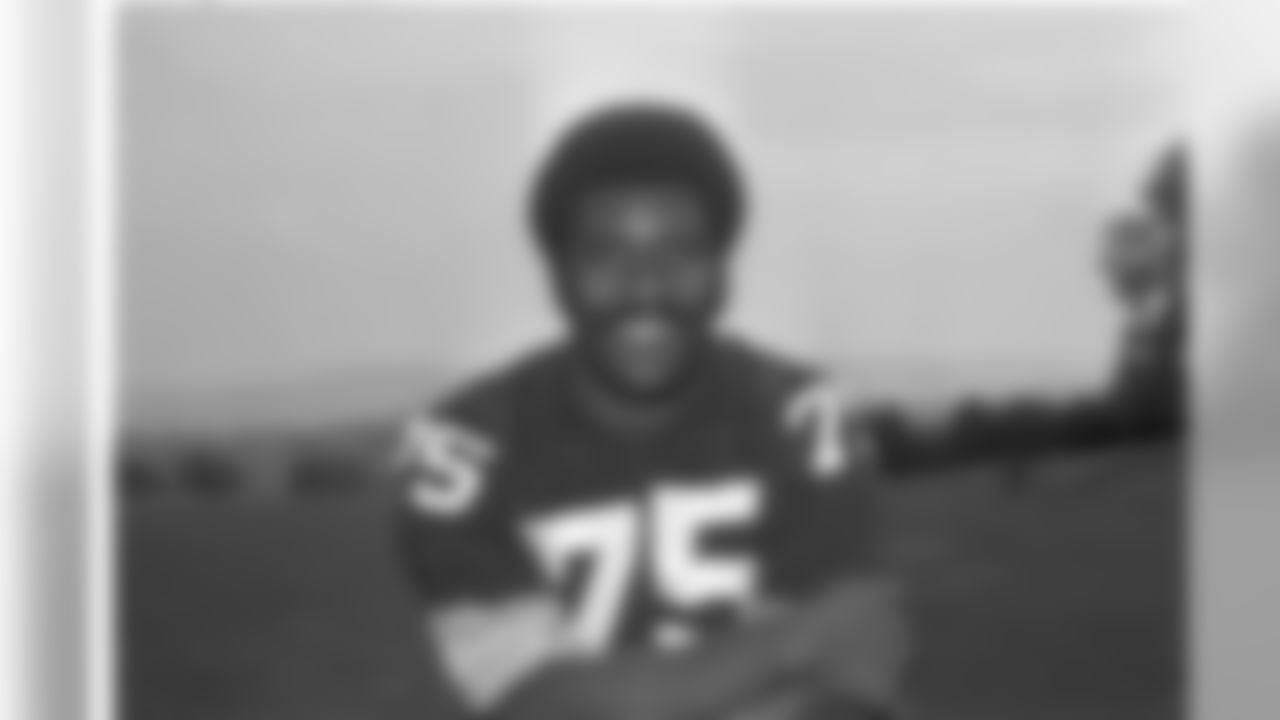
1969 JOE GREENE: The greatest player in franchise history. The most significant player in franchise history. The second player to have his jersey retired in Steelers history. The only player deserving to be on the Steelers Mount Rushmore, along with Art Rooney Sr., Dan Rooney, and Chuck Noll. Greene was the NFL Defensive Rookie of the Year, a two-time winner of the NFL Defensive Player of the Year Award (1972 and 1974), and a five-time first-team All-Pro. Hall of Fame, Class of 1987. Four Super Bowl rings.
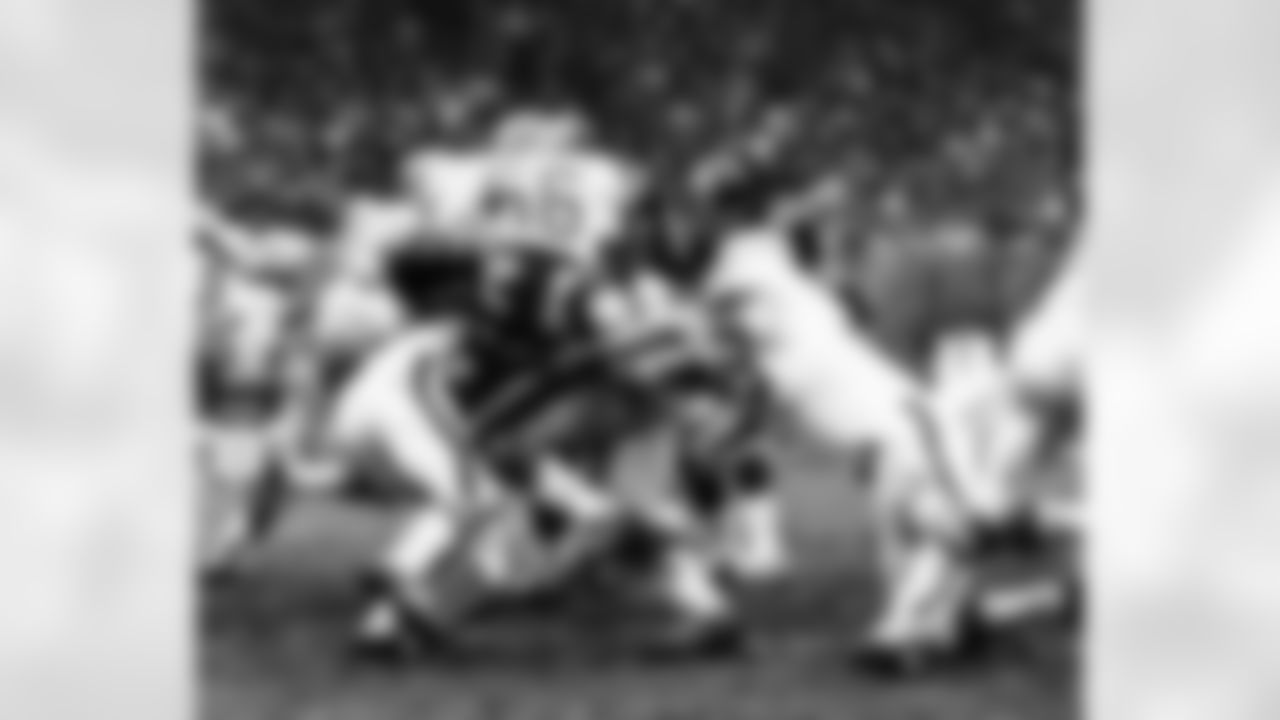
1969 JOE GREENE: The greatest player in franchise history. The most significant player in franchise history. The second player to have his jersey retired in Steelers history. The only player deserving to be on the Steelers Mount Rushmore, along with Art Rooney Sr., Dan Rooney, and Chuck Noll. Greene was the NFL Defensive Rookie of the Year, a two-time winner of the NFL Defensive Player of the Year Award (1972 and 1974), and a five-time first-team All-Pro. Hall of Fame, Class of 1987. Four Super Bowl rings.

1969 JOE GREENE: The greatest player in franchise history. The most significant player in franchise history. The second player to have his jersey retired in Steelers history. The only player deserving to be on the Steelers Mount Rushmore, along with Art Rooney Sr., Dan Rooney, and Chuck Noll. Greene was the NFL Defensive Rookie of the Year, a two-time winner of the NFL Defensive Player of the Year Award (1972 and 1974), and a five-time first-team All-Pro. Hall of Fame, Class of 1987. Four Super Bowl rings.

1969 JOE GREENE: The greatest player in franchise history. The most significant player in franchise history. The second player to have his jersey retired in Steelers history. The only player deserving to be on the Steelers Mount Rushmore, along with Art Rooney Sr., Dan Rooney, and Chuck Noll. Greene was the NFL Defensive Rookie of the Year, a two-time winner of the NFL Defensive Player of the Year Award (1972 and 1974), and a five-time first-team All-Pro. Hall of Fame, Class of 1987. Four Super Bowl rings.

1969 JOE GREENE: The greatest player in franchise history. The most significant player in franchise history. The second player to have his jersey retired in Steelers history. The only player deserving to be on the Steelers Mount Rushmore, along with Art Rooney Sr., Dan Rooney, and Chuck Noll. Greene was the NFL Defensive Rookie of the Year, a two-time winner of the NFL Defensive Player of the Year Award (1972 and 1974), and a five-time first-team All-Pro. Hall of Fame, Class of 1987. Four Super Bowl rings.

1969 JOE GREENE: The greatest player in franchise history. The most significant player in franchise history. The second player to have his jersey retired in Steelers history. The only player deserving to be on the Steelers Mount Rushmore, along with Art Rooney Sr., Dan Rooney, and Chuck Noll. Greene was the NFL Defensive Rookie of the Year, a two-time winner of the NFL Defensive Player of the Year Award (1972 and 1974), and a five-time first-team All-Pro. Hall of Fame, Class of 1987. Four Super Bowl rings.

1969 JOE GREENE: The greatest player in franchise history. The most significant player in franchise history. The second player to have his jersey retired in Steelers history. The only player deserving to be on the Steelers Mount Rushmore, along with Art Rooney Sr., Dan Rooney, and Chuck Noll. Greene was the NFL Defensive Rookie of the Year, a two-time winner of the NFL Defensive Player of the Year Award (1972 and 1974), and a five-time first-team All-Pro. Hall of Fame, Class of 1987. Four Super Bowl rings.

1970 TERRY BRADSHAW: If youre a guy who likes his quarterback to come up big in critical games, Bradshaw is your guy. He was 14-5 as a starter in the playoffs, 4-0 in the Super Bowl. His postseason passer rating was 83.0, and his 8.41 yards/attempt is the highest in NFL history among quarterbacks who have a comparable number of playoff starts. Bradshaw wouldnt help you win your fantasy league, but he forced you to build a bigger trophy case. Hall of Fame, Class of 1989. Four Super Bowl rings.

1970 TERRY BRADSHAW: If youre a guy who likes his quarterback to come up big in critical games, Bradshaw is your guy. He was 14-5 as a starter in the playoffs, 4-0 in the Super Bowl. His postseason passer rating was 83.0, and his 8.41 yards/attempt is the highest in NFL history among quarterbacks who have a comparable number of playoff starts. Bradshaw wouldnt help you win your fantasy league, but he forced you to build a bigger trophy case. Hall of Fame, Class of 1989. Four Super Bowl rings.

1970 TERRY BRADSHAW: If youre a guy who likes his quarterback to come up big in critical games, Bradshaw is your guy. He was 14-5 as a starter in the playoffs, 4-0 in the Super Bowl. His postseason passer rating was 83.0, and his 8.41 yards/attempt is the highest in NFL history among quarterbacks who have a comparable number of playoff starts. Bradshaw wouldnt help you win your fantasy league, but he forced you to build a bigger trophy case. Hall of Fame, Class of 1989. Four Super Bowl rings.
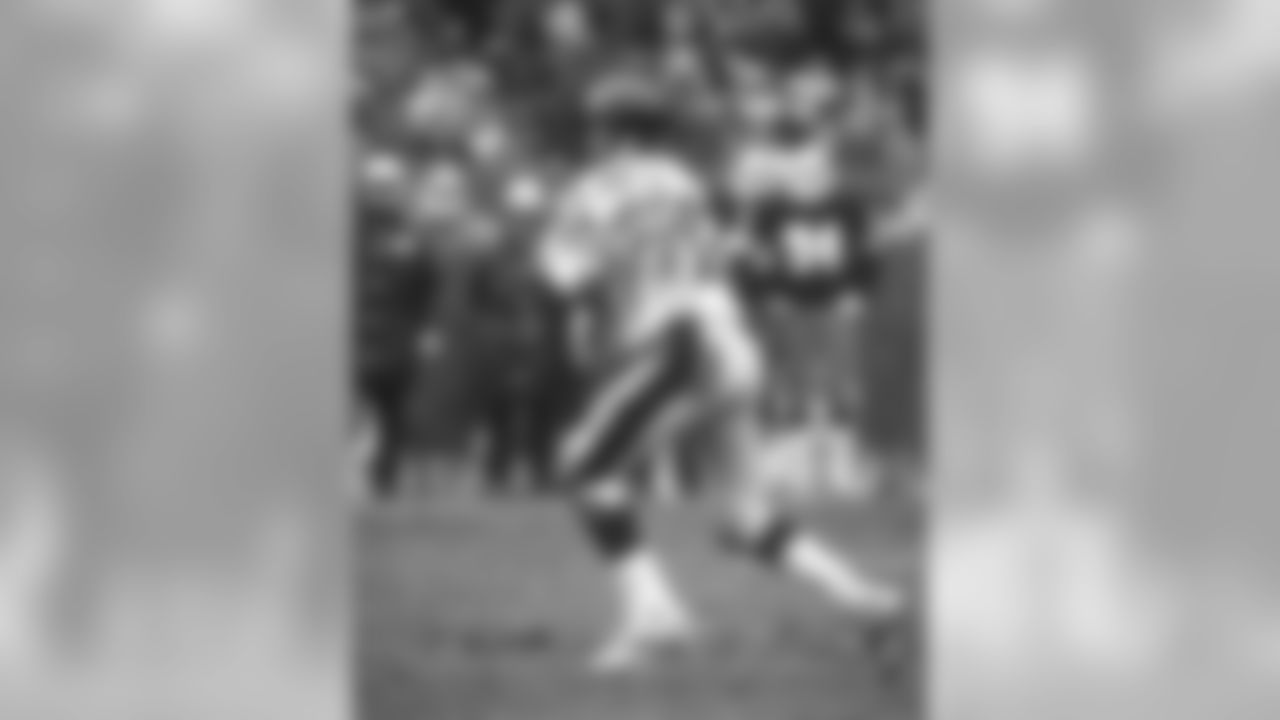
1970 TERRY BRADSHAW: If youre a guy who likes his quarterback to come up big in critical games, Bradshaw is your guy. He was 14-5 as a starter in the playoffs, 4-0 in the Super Bowl. His postseason passer rating was 83.0, and his 8.41 yards/attempt is the highest in NFL history among quarterbacks who have a comparable number of playoff starts. Bradshaw wouldnt help you win your fantasy league, but he forced you to build a bigger trophy case. Hall of Fame, Class of 1989. Four Super Bowl rings.

1972 FRANCO HARRIS: In terms of coming up big in critical games, Harris is the running back version of Terry Bradshaw. In 19 playoff games, Harris carried 400 times for 1,556 yards (3.9 average) with 16 touchdowns, while also catching 51 passes for 504 more yards and another touchdown. Harris rushed for four touchdowns in four Super Bowl wins. Harris is second in all-time postseason rushing yards to Emmitt Smith (1,556-1,586) but when receptions are added in, Harris leads Smith in yards from scrimmage (2,060-1,928). Hall of Fame, Class of 1990. Four Super Bowl rings.

1972 FRANCO HARRIS: In terms of coming up big in critical games, Harris is the running back version of Terry Bradshaw. In 19 playoff games, Harris carried 400 times for 1,556 yards (3.9 average) with 16 touchdowns, while also catching 51 passes for 504 more yards and another touchdown. Harris rushed for four touchdowns in four Super Bowl wins. Harris is second in all-time postseason rushing yards to Emmitt Smith (1,556-1,586) but when receptions are added in, Harris leads Smith in yards from scrimmage (2,060-1,928). Hall of Fame, Class of 1990. Four Super Bowl rings.

1972 FRANCO HARRIS: In terms of coming up big in critical games, Harris is the running back version of Terry Bradshaw. In 19 playoff games, Harris carried 400 times for 1,556 yards (3.9 average) with 16 touchdowns, while also catching 51 passes for 504 more yards and another touchdown. Harris rushed for four touchdowns in four Super Bowl wins. Harris is second in all-time postseason rushing yards to Emmitt Smith (1,556-1,586) but when receptions are added in, Harris leads Smith in yards from scrimmage (2,060-1,928). Hall of Fame, Class of 1990. Four Super Bowl rings.
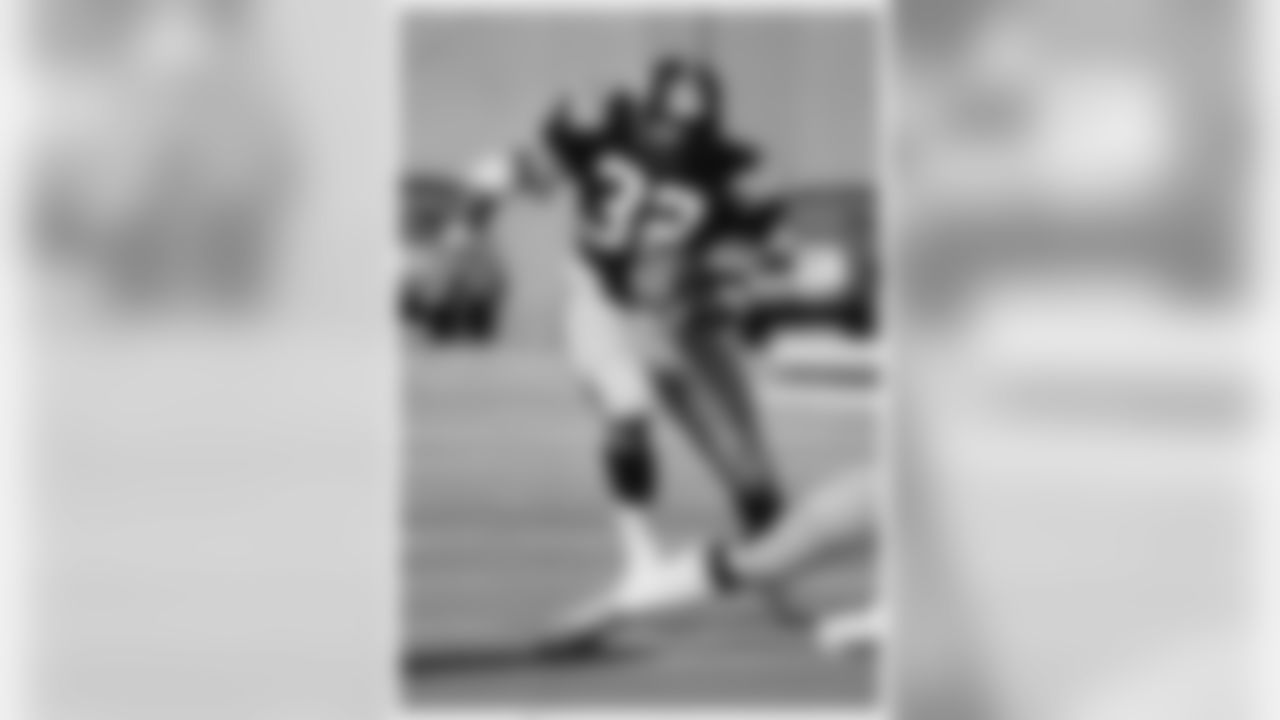
1972 FRANCO HARRIS: In terms of coming up big in critical games, Harris is the running back version of Terry Bradshaw. In 19 playoff games, Harris carried 400 times for 1,556 yards (3.9 average) with 16 touchdowns, while also catching 51 passes for 504 more yards and another touchdown. Harris rushed for four touchdowns in four Super Bowl wins. Harris is second in all-time postseason rushing yards to Emmitt Smith (1,556-1,586) but when receptions are added in, Harris leads Smith in yards from scrimmage (2,060-1,928). Hall of Fame, Class of 1990. Four Super Bowl rings.
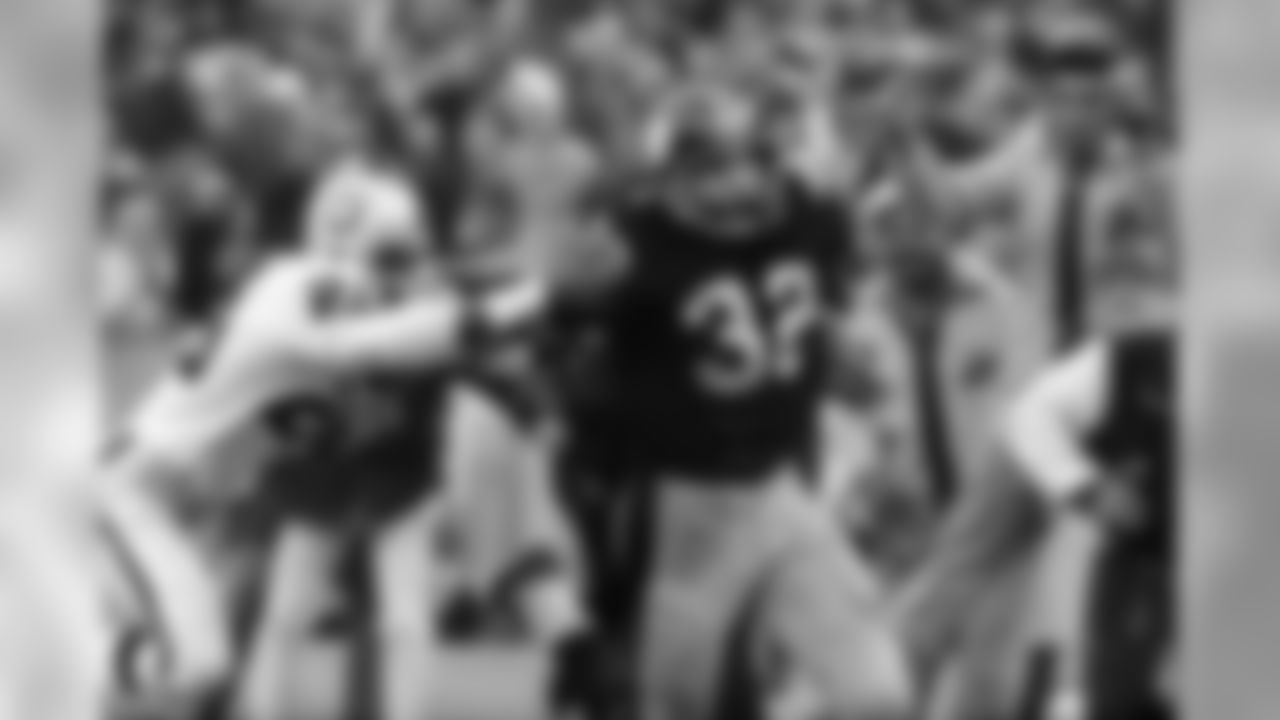
1972 FRANCO HARRIS: In terms of coming up big in critical games, Harris is the running back version of Terry Bradshaw. In 19 playoff games, Harris carried 400 times for 1,556 yards (3.9 average) with 16 touchdowns, while also catching 51 passes for 504 more yards and another touchdown. Harris rushed for four touchdowns in four Super Bowl wins. Harris is second in all-time postseason rushing yards to Emmitt Smith (1,556-1,586) but when receptions are added in, Harris leads Smith in yards from scrimmage (2,060-1,928). Hall of Fame, Class of 1990. Four Super Bowl rings.

1974 LYNN SWANN: Quality over quantity might be the simplest way to characterize Swanns career. His 907 receiving yards in 16 playoff games is more than he ever amassed over a whole regular season, and he also averaged 18.9 yards per catch in the postseason to go along with nine touchdowns. In 1975, Swann led the NFL with 11 touchdown receptions on only 49 catches, and then he capped that season by being voted the MVP of Super Bowl X. Hall of Fame, Class of 2001. Four Super Bowl rings.

1974 LYNN SWANN: Quality over quantity might be the simplest way to characterize Swanns career. His 907 receiving yards in 16 playoff games is more than he ever amassed over a whole regular season, and he also averaged 18.9 yards per catch in the postseason to go along with nine touchdowns. In 1975, Swann led the NFL with 11 touchdown receptions on only 49 catches, and then he capped that season by being voted the MVP of Super Bowl X. Hall of Fame, Class of 2001. Four Super Bowl rings.

1974 LYNN SWANN: Quality over quantity might be the simplest way to characterize Swanns career. His 907 receiving yards in 16 playoff games is more than he ever amassed over a whole regular season, and he also averaged 18.9 yards per catch in the postseason to go along with nine touchdowns. In 1975, Swann led the NFL with 11 touchdown receptions on only 49 catches, and then he capped that season by being voted the MVP of Super Bowl X. Hall of Fame, Class of 2001. Four Super Bowl rings.

1974 LYNN SWANN: Quality over quantity might be the simplest way to characterize Swanns career. His 907 receiving yards in 16 playoff games is more than he ever amassed over a whole regular season, and he also averaged 18.9 yards per catch in the postseason to go along with nine touchdowns. In 1975, Swann led the NFL with 11 touchdown receptions on only 49 catches, and then he capped that season by being voted the MVP of Super Bowl X. Hall of Fame, Class of 2001. Four Super Bowl rings.

1974 LYNN SWANN: Quality over quantity might be the simplest way to characterize Swanns career. His 907 receiving yards in 16 playoff games is more than he ever amassed over a whole regular season, and he also averaged 18.9 yards per catch in the postseason to go along with nine touchdowns. In 1975, Swann led the NFL with 11 touchdown receptions on only 49 catches, and then he capped that season by being voted the MVP of Super Bowl X. Hall of Fame, Class of 2001. Four Super Bowl rings.

1984 LOUIS LIPPS: A playmaking receiver not lucky enough to play with either Terry Bradshaw or Ben Roethlisberger, Lipps led the NFL in punt returns as a rookie and then caught 59 passes for 1,132 yards (19.2 average) in 1985. In his first two seasons with the Steelers, Lipps scored 24 touchdowns receiving and returning.

1984 LOUIS LIPPS: A playmaking receiver not lucky enough to play with either Terry Bradshaw or Ben Roethlisberger, Lipps led the NFL in punt returns as a rookie and then caught 59 passes for 1,132 yards (19.2 average) in 1985. In his first two seasons with the Steelers, Lipps scored 24 touchdowns receiving and returning.
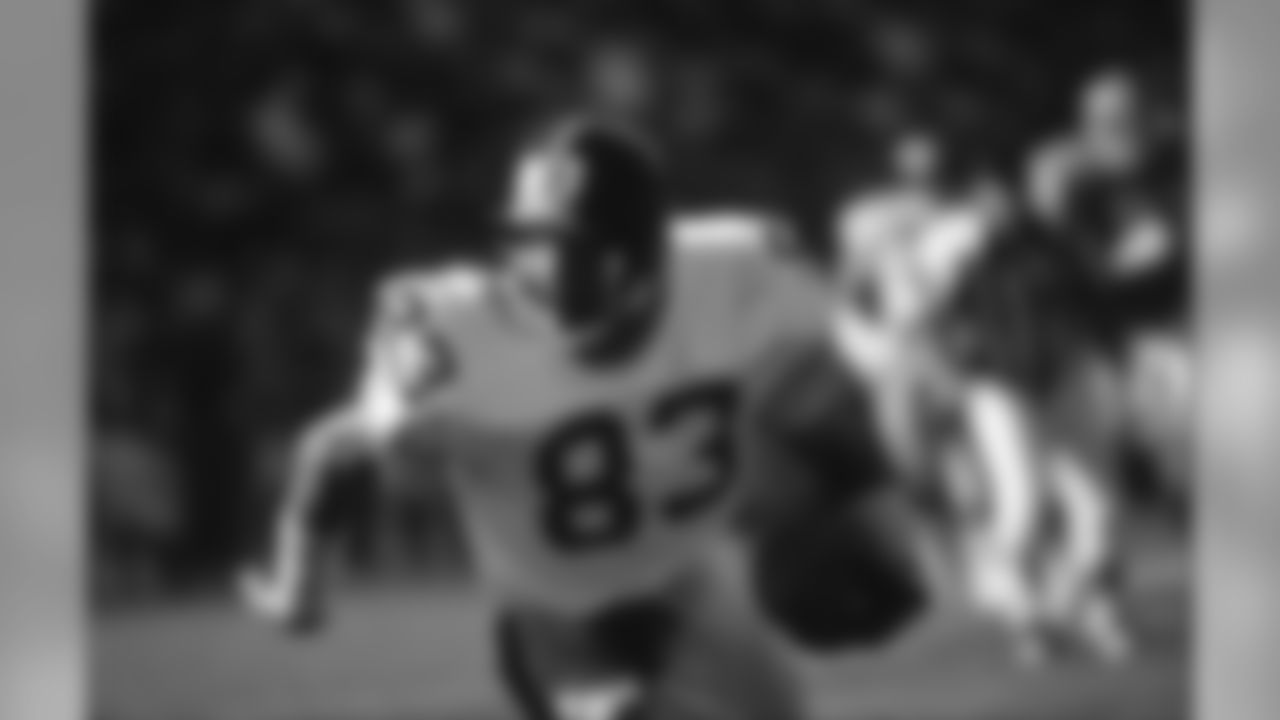
1984 LOUIS LIPPS: A playmaking receiver not lucky enough to play with either Terry Bradshaw or Ben Roethlisberger, Lipps led the NFL in punt returns as a rookie and then caught 59 passes for 1,132 yards (19.2 average) in 1985. In his first two seasons with the Steelers, Lipps scored 24 touchdowns receiving and returning.

1984 LOUIS LIPPS: A playmaking receiver not lucky enough to play with either Terry Bradshaw or Ben Roethlisberger, Lipps led the NFL in punt returns as a rookie and then caught 59 passes for 1,132 yards (19.2 average) in 1985. In his first two seasons with the Steelers, Lipps scored 24 touchdowns receiving and returning.

1984 LOUIS LIPPS: A playmaking receiver not lucky enough to play with either Terry Bradshaw or Ben Roethlisberger, Lipps led the NFL in punt returns as a rookie and then caught 59 passes for 1,132 yards (19.2 average) in 1985. In his first two seasons with the Steelers, Lipps scored 24 touchdowns receiving and returning.

1987 ROD WOODSON: In terms of cornerbacks who werent afraid to make a tackle, Woodson was the best of his era. In 10 seasons with the Steelers, Woodson was named first-team All-Pro five times and won the NFL Defensive Player of the Year Award in 1993. Woodson finished his career here with 13.5 sacks, 38 interceptions, 16 forced fumbles, and 21 fumble recoveries. He scored six defensive touchdowns, and added another four on returns. Hall of Fame, Class of 2009.

1987 ROD WOODSON: In terms of cornerbacks who werent afraid to make a tackle, Woodson was the best of his era. In 10 seasons with the Steelers, Woodson was named first-team All-Pro five times and won the NFL Defensive Player of the Year Award in 1993. Woodson finished his career here with 13.5 sacks, 38 interceptions, 16 forced fumbles, and 21 fumble recoveries. He scored six defensive touchdowns, and added another four on returns. Hall of Fame, Class of 2009.

1987 ROD WOODSON: In terms of cornerbacks who werent afraid to make a tackle, Woodson was the best of his era. In 10 seasons with the Steelers, Woodson was named first-team All-Pro five times and won the NFL Defensive Player of the Year Award in 1993. Woodson finished his career here with 13.5 sacks, 38 interceptions, 16 forced fumbles, and 21 fumble recoveries. He scored six defensive touchdowns, and added another four on returns. Hall of Fame, Class of 2009.

1987 ROD WOODSON: In terms of cornerbacks who werent afraid to make a tackle, Woodson was the best of his era. In 10 seasons with the Steelers, Woodson was named first-team All-Pro five times and won the NFL Defensive Player of the Year Award in 1993. Woodson finished his career here with 13.5 sacks, 38 interceptions, 16 forced fumbles, and 21 fumble recoveries. He scored six defensive touchdowns, and added another four on returns. Hall of Fame, Class of 2009.

1987 ROD WOODSON: In terms of cornerbacks who werent afraid to make a tackle, Woodson was the best of his era. In 10 seasons with the Steelers, Woodson was named first-team All-Pro five times and won the NFL Defensive Player of the Year Award in 1993. Woodson finished his career here with 13.5 sacks, 38 interceptions, 16 forced fumbles, and 21 fumble recoveries. He scored six defensive touchdowns, and added another four on returns. Hall of Fame, Class of 2009.

1998 ALAN FANECA: The best guard in franchise history, Faneca started 153 of the 158 games he played in a Steelers uniform. During his career here, Faneca was voted to seven Pro Bowls and was named first-team All-Pro six times. One Super Bowl ring.

1998 ALAN FANECA: The best guard in franchise history, Faneca started 153 of the 158 games he played in a Steelers uniform. During his career here, Faneca was voted to seven Pro Bowls and was named first-team All-Pro six times. One Super Bowl ring.
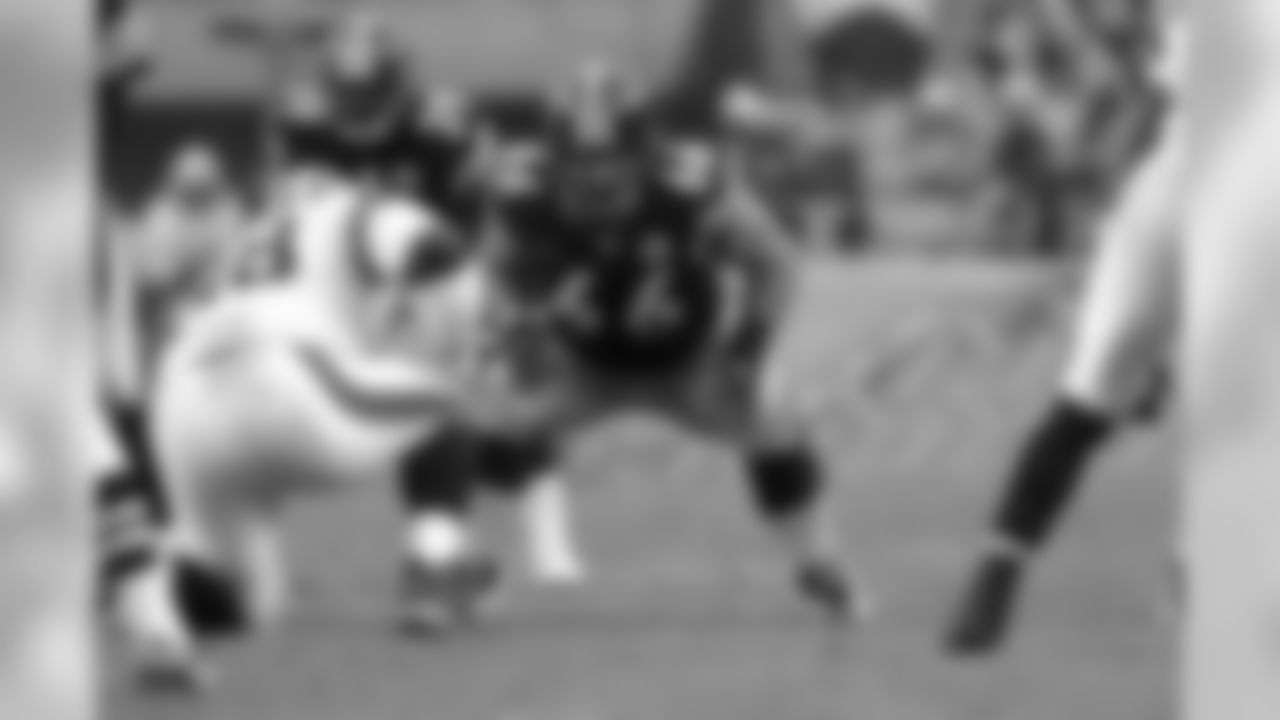
1998 ALAN FANECA: The best guard in franchise history, Faneca started 153 of the 158 games he played in a Steelers uniform. During his career here, Faneca was voted to seven Pro Bowls and was named first-team All-Pro six times. One Super Bowl ring.

1998 ALAN FANECA: The best guard in franchise history, Faneca started 153 of the 158 games he played in a Steelers uniform. During his career here, Faneca was voted to seven Pro Bowls and was named first-team All-Pro six times. One Super Bowl ring.
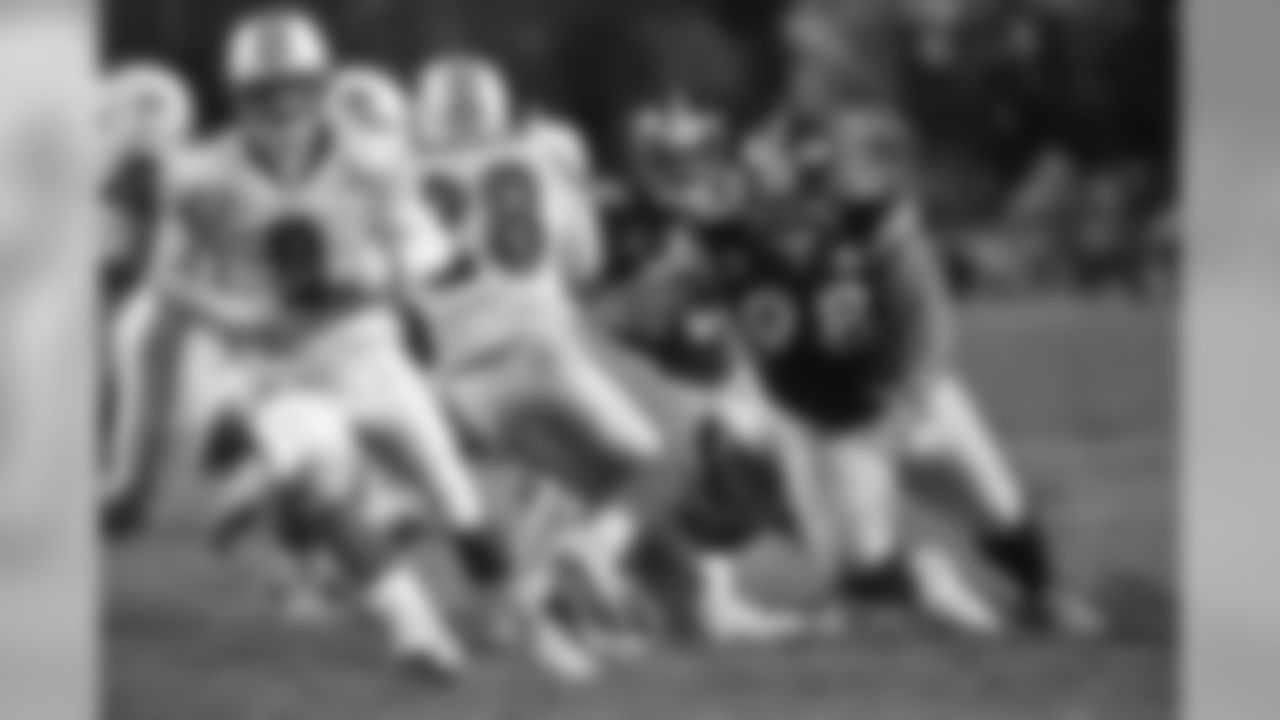
2001 CASEY HAMPTON: An underrated leader on Steelers teams that played in three Super Bowls and won two, Hampton was voted to five Pro Bowls. During his 13 seasons, the Steelers run defense was ranked among the NFLs top three 10 times, and it was No. 1 four of those times. Two Super Bowl rings.
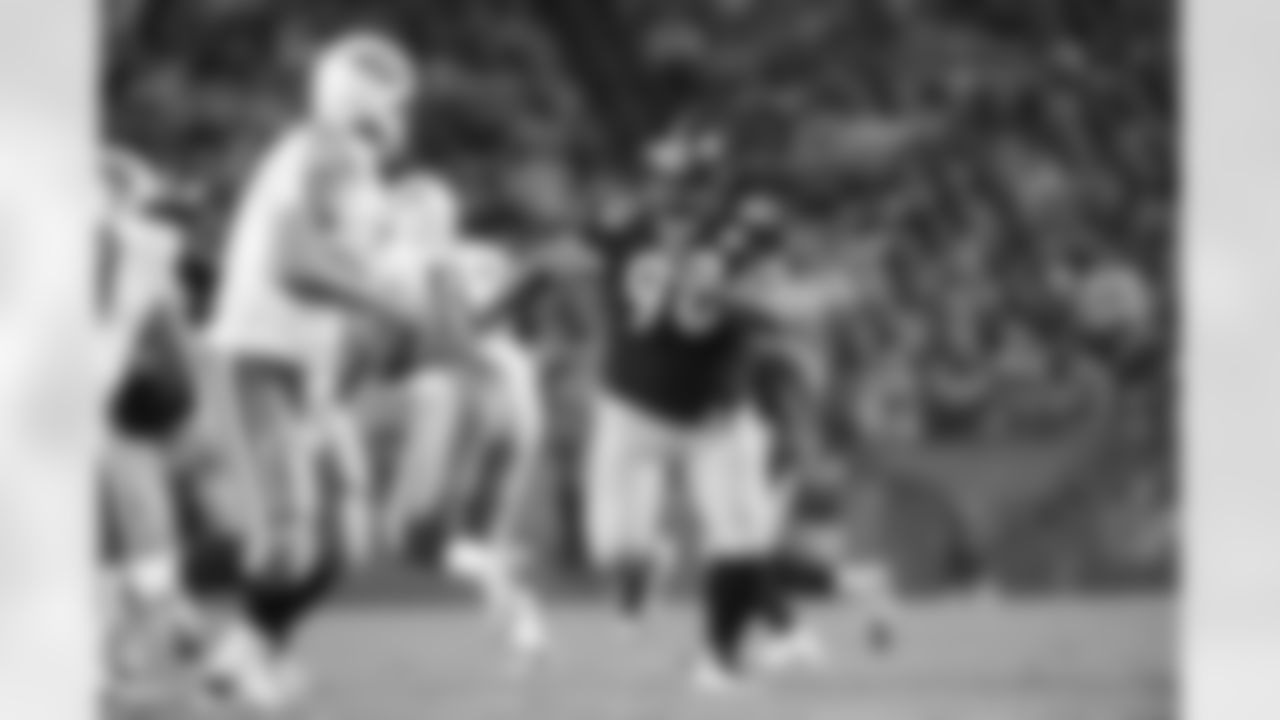
2001 CASEY HAMPTON: An underrated leader on Steelers teams that played in three Super Bowls and won two, Hampton was voted to five Pro Bowls. During his 13 seasons, the Steelers run defense was ranked among the NFLs top three 10 times, and it was No. 1 four of those times. Two Super Bowl rings.
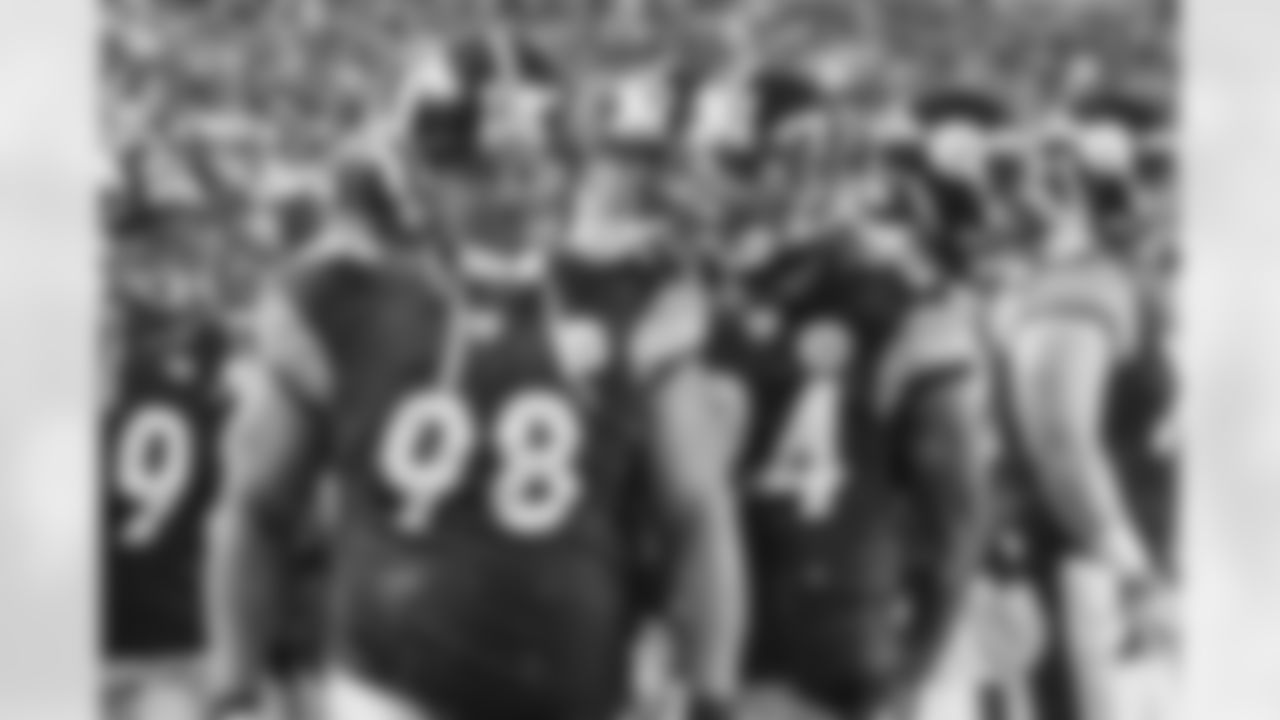
2001 CASEY HAMPTON: An underrated leader on Steelers teams that played in three Super Bowls and won two, Hampton was voted to five Pro Bowls. During his 13 seasons, the Steelers run defense was ranked among the NFLs top three 10 times, and it was No. 1 four of those times. Two Super Bowl rings.

2001 CASEY HAMPTON: An underrated leader on Steelers teams that played in three Super Bowls and won two, Hampton was voted to five Pro Bowls. During his 13 seasons, the Steelers run defense was ranked among the NFLs top three 10 times, and it was No. 1 four of those times. Two Super Bowl rings.

2003 TROY POLAMALU: The Steelers secondarys top playmaker during his era, Polamalu has started 130 regular season games, and he has 12 sacks, 32 interceptions, 13 forced fumbles, and six fumble recoveries. He has scored five defensive touchdowns. In the playoffs, Polamalu has three interceptions and one touchdown. He was the 2010 NFL Defensive Player of the Year, and he has been named first-team All-Pro four times. Two Super Bowl rings.

2003 TROY POLAMALU: The Steelers secondarys top playmaker during his era, Polamalu has started 130 regular season games, and he has 12 sacks, 32 interceptions, 13 forced fumbles, and six fumble recoveries. He has scored five defensive touchdowns. In the playoffs, Polamalu has three interceptions and one touchdown. He was the 2010 NFL Defensive Player of the Year, and he has been named first-team All-Pro four times. Two Super Bowl rings.

2003 TROY POLAMALU: The Steelers secondarys top playmaker during his era, Polamalu has started 130 regular season games, and he has 12 sacks, 32 interceptions, 13 forced fumbles, and six fumble recoveries. He has scored five defensive touchdowns. In the playoffs, Polamalu has three interceptions and one touchdown. He was the 2010 NFL Defensive Player of the Year, and he has been named first-team All-Pro four times. Two Super Bowl rings.
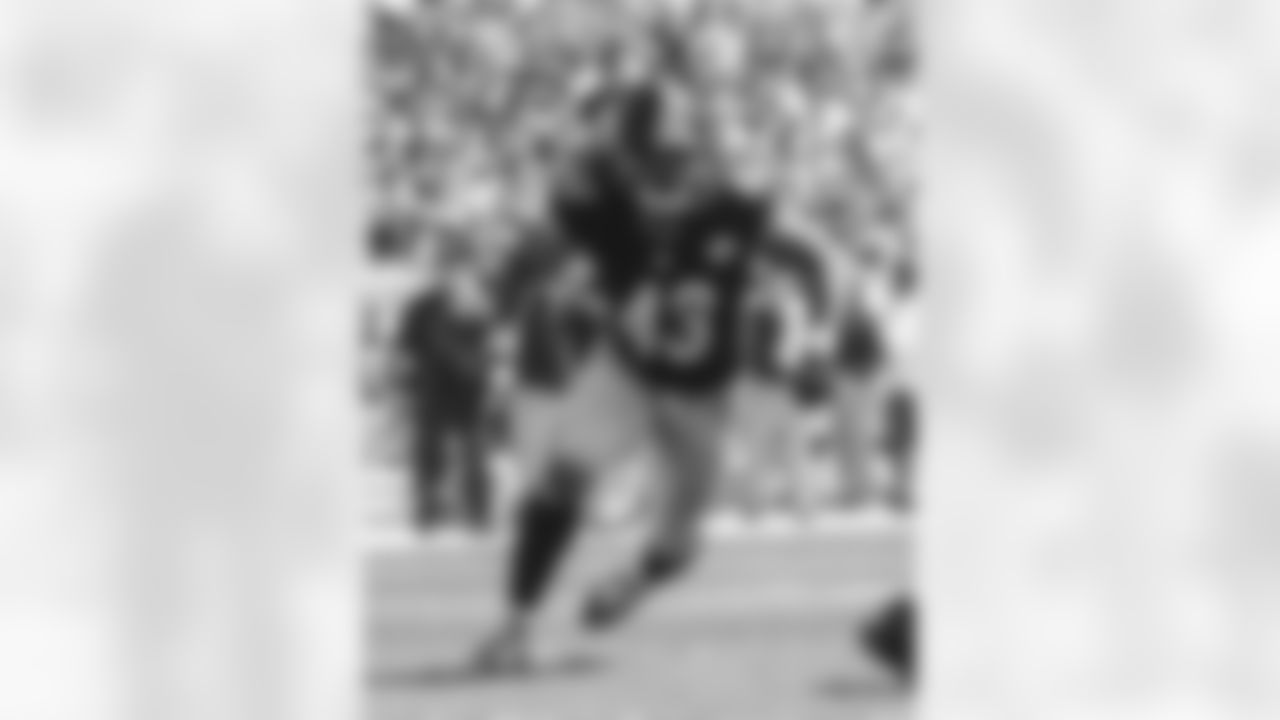
2003 TROY POLAMALU: The Steelers secondarys top playmaker during his era, Polamalu has started 130 regular season games, and he has 12 sacks, 32 interceptions, 13 forced fumbles, and six fumble recoveries. He has scored five defensive touchdowns. In the playoffs, Polamalu has three interceptions and one touchdown. He was the 2010 NFL Defensive Player of the Year, and he has been named first-team All-Pro four times. Two Super Bowl rings.

2003 TROY POLAMALU: The Steelers secondarys top playmaker during his era, Polamalu has started 130 regular season games, and he has 12 sacks, 32 interceptions, 13 forced fumbles, and six fumble recoveries. He has scored five defensive touchdowns. In the playoffs, Polamalu has three interceptions and one touchdown. He was the 2010 NFL Defensive Player of the Year, and he has been named first-team All-Pro four times. Two Super Bowl rings.

2003 TROY POLAMALU: The Steelers secondarys top playmaker during his era, Polamalu has started 130 regular season games, and he has 12 sacks, 32 interceptions, 13 forced fumbles, and six fumble recoveries. He has scored five defensive touchdowns. In the playoffs, Polamalu has three interceptions and one touchdown. He was the 2010 NFL Defensive Player of the Year, and he has been named first-team All-Pro four times. Two Super Bowl rings.

2004 BEN ROETHLISBERGER: His 13-0 record as a rookie stamped him as a winner, and Roethlisberger today is one of only 12 quarterbacks to win multiple Super Bowls as a starting quarterback. His playoff record is 11-6, 2-1 in Super Bowls, and Roethlisberger has completed 61.5 of his postseason passes, with 22 touchdowns and a rating of 84.6. Still writing his history. Two Super Bowl rings.

2004 BEN ROETHLISBERGER: His 13-0 record as a rookie stamped him as a winner, and Roethlisberger today is one of only 12 quarterbacks to win multiple Super Bowls as a starting quarterback. His playoff record is 11-6, 2-1 in Super Bowls, and Roethlisberger has completed 61.5 of his postseason passes, with 22 touchdowns and a rating of 84.6. Still writing his history. Two Super Bowl rings.

2004 BEN ROETHLISBERGER: His 13-0 record as a rookie stamped him as a winner, and Roethlisberger today is one of only 12 quarterbacks to win multiple Super Bowls as a starting quarterback. His playoff record is 11-6, 2-1 in Super Bowls, and Roethlisberger has completed 61.5 of his postseason passes, with 22 touchdowns and a rating of 84.6. Still writing his history. Two Super Bowl rings.

2004 BEN ROETHLISBERGER: His 13-0 record as a rookie stamped him as a winner, and Roethlisberger today is one of only 12 quarterbacks to win multiple Super Bowls as a starting quarterback. His playoff record is 11-6, 2-1 in Super Bowls, and Roethlisberger has completed 61.5 of his postseason passes, with 22 touchdowns and a rating of 84.6. Still writing his history. Two Super Bowl rings.

2004 BEN ROETHLISBERGER: His 13-0 record as a rookie stamped him as a winner, and Roethlisberger today is one of only 12 quarterbacks to win multiple Super Bowls as a starting quarterback. His playoff record is 11-6, 2-1 in Super Bowls, and Roethlisberger has completed 61.5 of his postseason passes, with 22 touchdowns and a rating of 84.6. Still writing his history. Two Super Bowl rings.

2004 BEN ROETHLISBERGER: His 13-0 record as a rookie stamped him as a winner, and Roethlisberger today is one of only 12 quarterbacks to win multiple Super Bowls as a starting quarterback. His playoff record is 11-6, 2-1 in Super Bowls, and Roethlisberger has completed 61.5 of his postseason passes, with 22 touchdowns and a rating of 84.6. Still writing his history. Two Super Bowl rings.

2005 HEATH MILLER: The best tight end in franchise history, Miller has handled all facets of his position like few others in the NFL through his 11-year career. Miller started 167 of his 168 career regular-season games and registered 6,569 receiving yards and 45 touchdowns on 592 receptions. In 15 career postseason games, Miller tallied 49 catches, 587 yards and four touchdowns. Voted to the Pro Bowl twice. Two Super Bowl rings.

2005 HEATH MILLER: The best tight end in franchise history, Miller has handled all facets of his position like few others in the NFL through his 11-year career. Miller started 167 of his 168 career regular-season games and registered 6,569 receiving yards and 45 touchdowns on 592 receptions. In 15 career postseason games, Miller tallied 49 catches, 587 yards and four touchdowns. Voted to the Pro Bowl twice. Two Super Bowl rings.
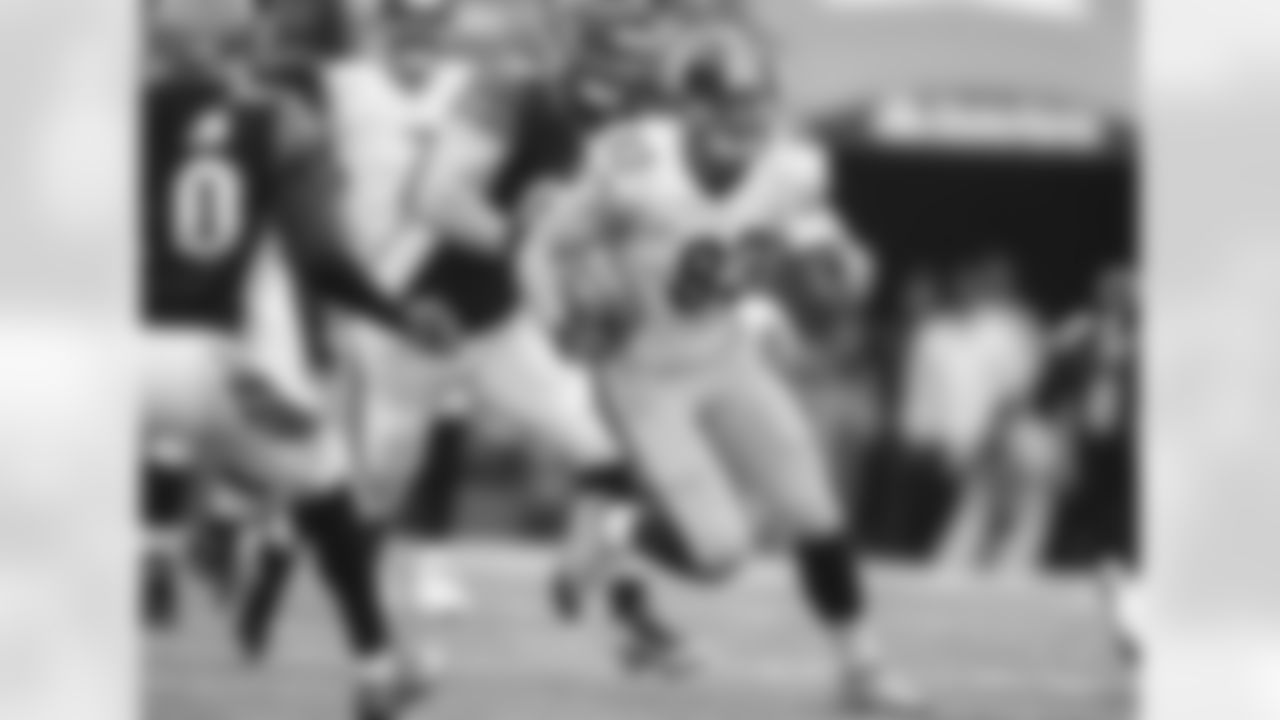
2005 HEATH MILLER: The best tight end in franchise history, Miller has handled all facets of his position like few others in the NFL through his 11-year career. Miller started 167 of his 168 career regular-season games and registered 6,569 receiving yards and 45 touchdowns on 592 receptions. In 15 career postseason games, Miller tallied 49 catches, 587 yards and four touchdowns. Voted to the Pro Bowl twice. Two Super Bowl rings.

2005 HEATH MILLER: The best tight end in franchise history, Miller has handled all facets of his position like few others in the NFL through his 11-year career. Miller started 167 of his 168 career regular-season games and registered 6,569 receiving yards and 45 touchdowns on 592 receptions. In 15 career postseason games, Miller tallied 49 catches, 587 yards and four touchdowns. Voted to the Pro Bowl twice. Two Super Bowl rings.

2005 HEATH MILLER: The best tight end in franchise history, Miller has handled all facets of his position like few others in the NFL through his 11-year career. Miller started 167 of his 168 career regular-season games and registered 6,569 receiving yards and 45 touchdowns on 592 receptions. In 15 career postseason games, Miller tallied 49 catches, 587 yards and four touchdowns. Voted to the Pro Bowl twice. Two Super Bowl rings.
Supreme Court history. Appointed to the court by President John F. Kennedy in 1962, White retired in 1993. "Of all the athletes I have known in my lifetime, I'd have to say Whizzer White came as close to anyone to giving 100 percent of himself when he was in competition," said Rooney.
1942 – BILL DUDLEY: Hall of Fame Class of 1966. Since the NFL-AFL merger in 1970, the Pittsburgh Steelers have rushed for more yards than any other team in the league, and their edge is not insubstantial. So, who is the last Steelers back to lead the NFL in rushing? Wrong – it was Bill Dudley, a tailback in the team's single-wing offense during his era. Dudley led the NFL in rushing twice during his time with the Steelers – first as a rookie with 696 yards on 162 attempts, and then his 1946 season was an all-timer. In 1946, Dudley led the NFL in rushing (604 yards on 146 attempts), but he also led the NFL in punt returns (385 yards on 27 returns for a 14.3 average), and he led the NFL in interceptions (10 that he returned for 242 yards), and he led the NFL in fumble recoveries (seven). He also served as the team's punter with a 40.2 average, and he passed for 438 yards and two touchdowns.
1957 – LEN DAWSON: Back in this era, the Steelers did a better job of drafting than developing. In 1955, they had cut a quarterback they picked on the ninth-round named John Unitas; and in 1957, they would draft Dawson but cut him after three years and only 17 pass attempts. Unitas was inducted into the Pro Football Hall of Fame in 1979. Dawson was inducted in 1987.
**
As Joe Greene's jersey retirement approaches, take a look at some more of his best moments.
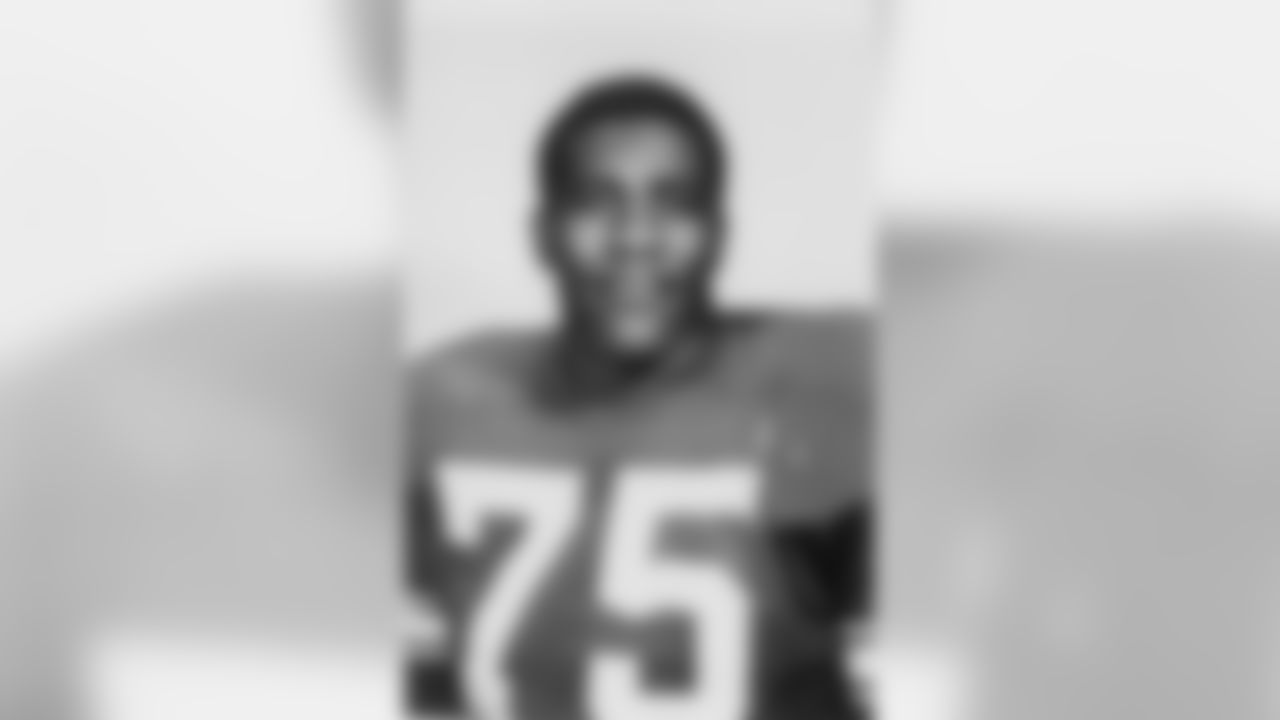
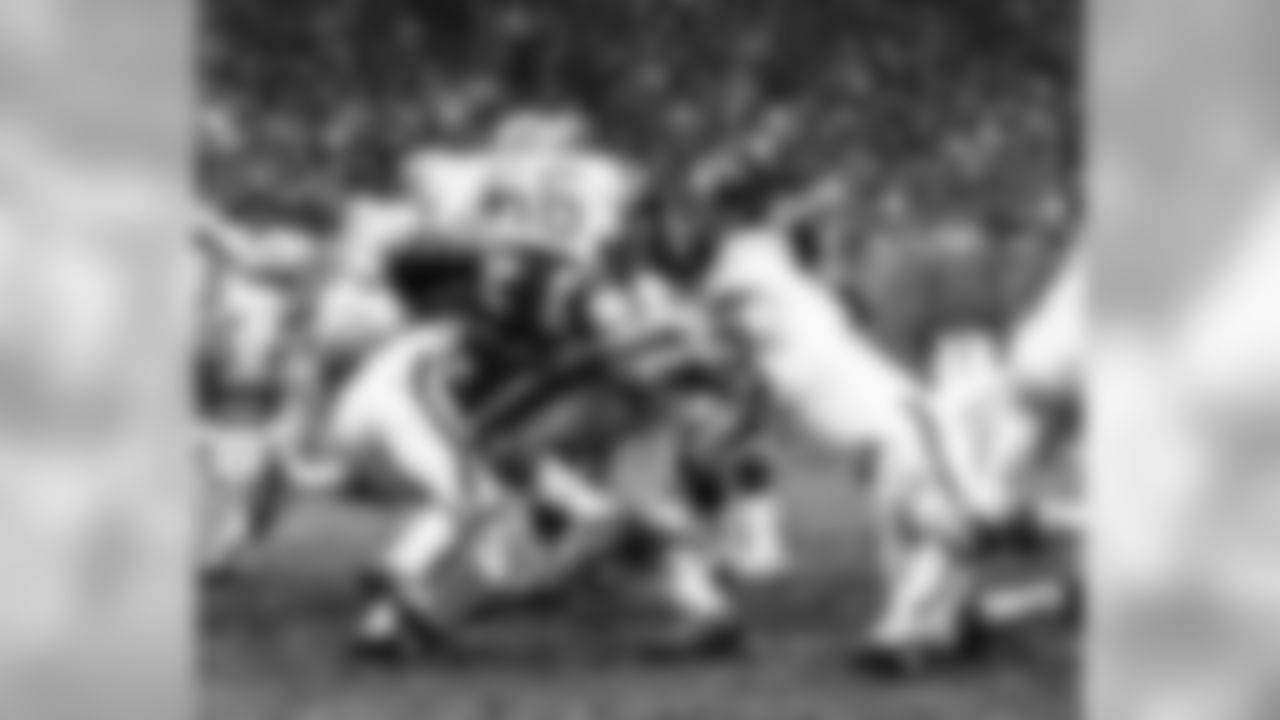
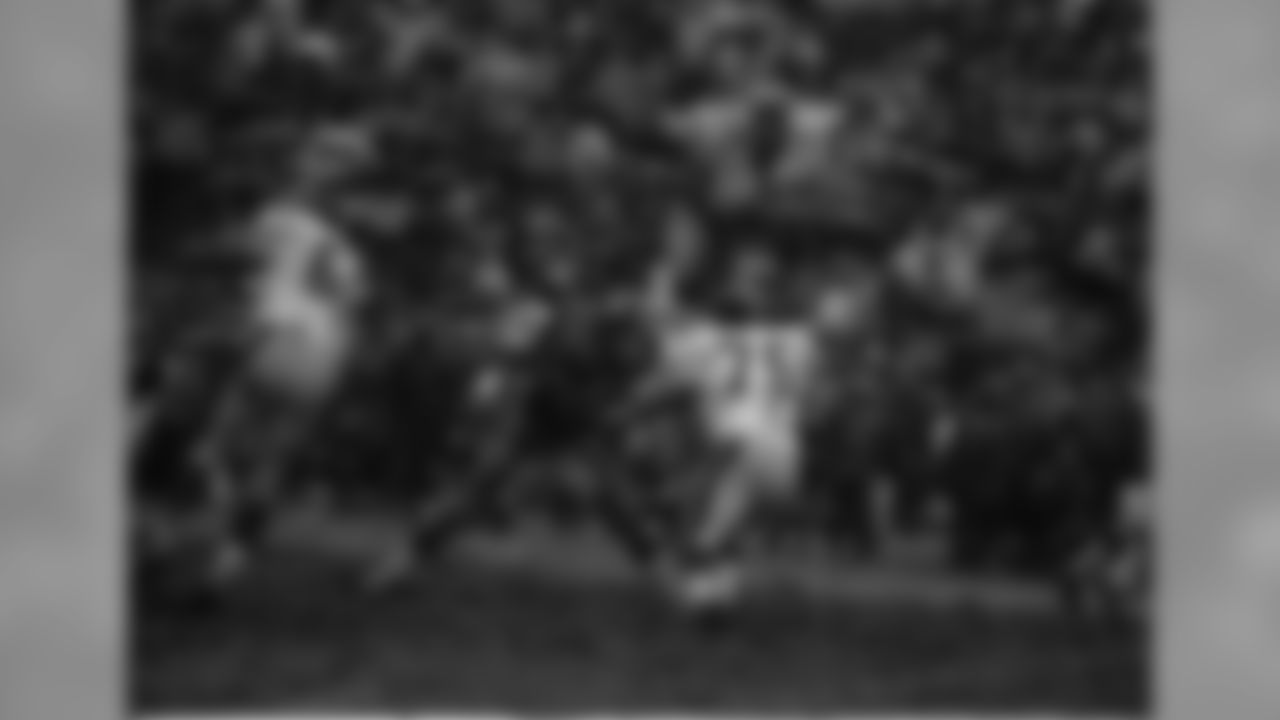
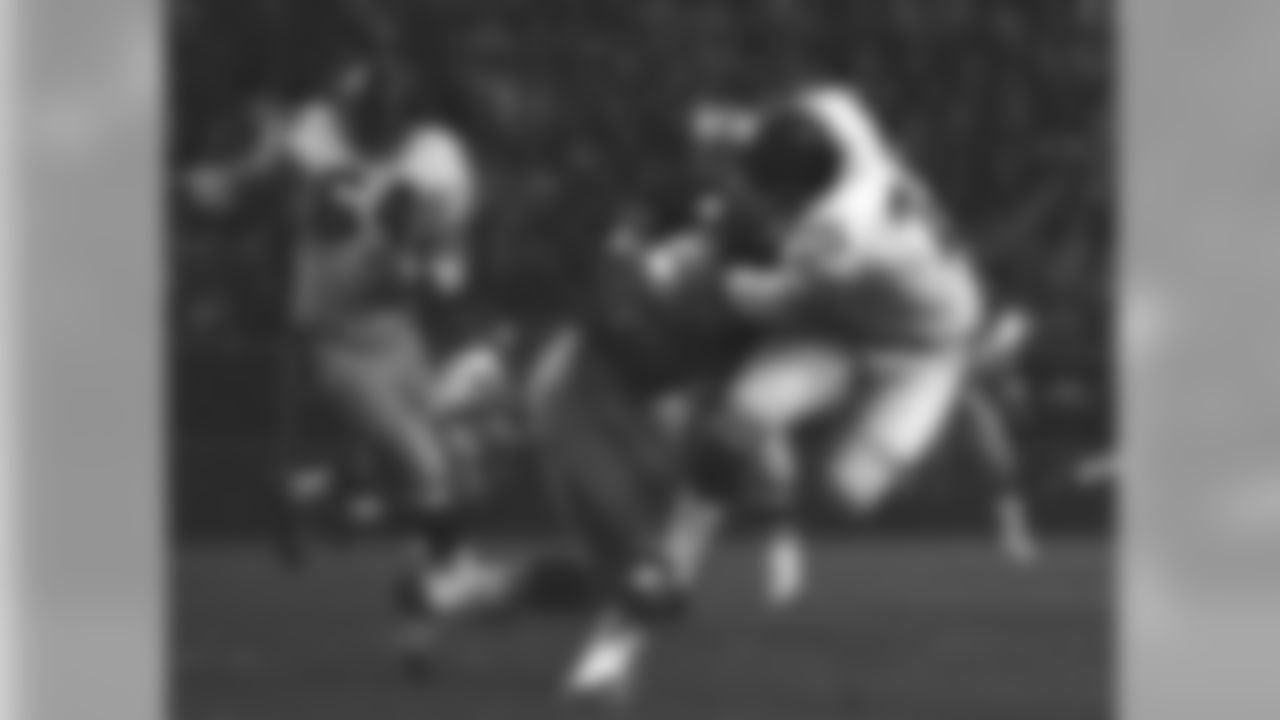
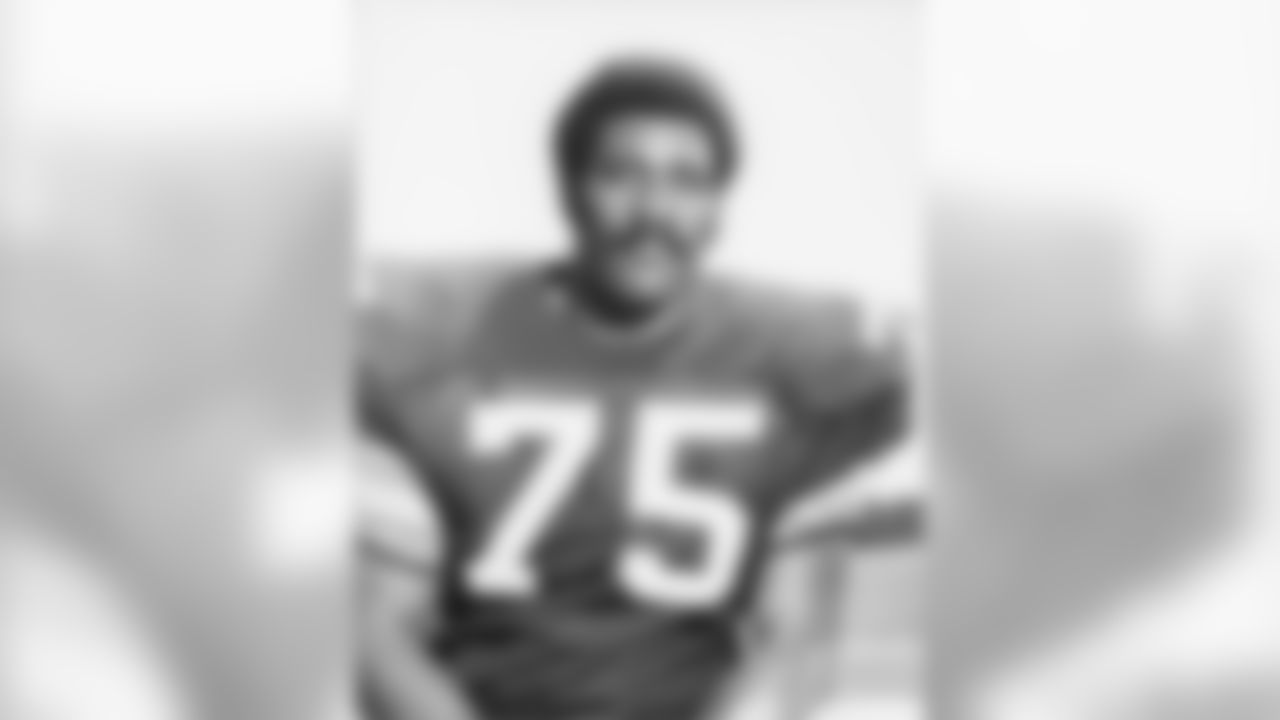
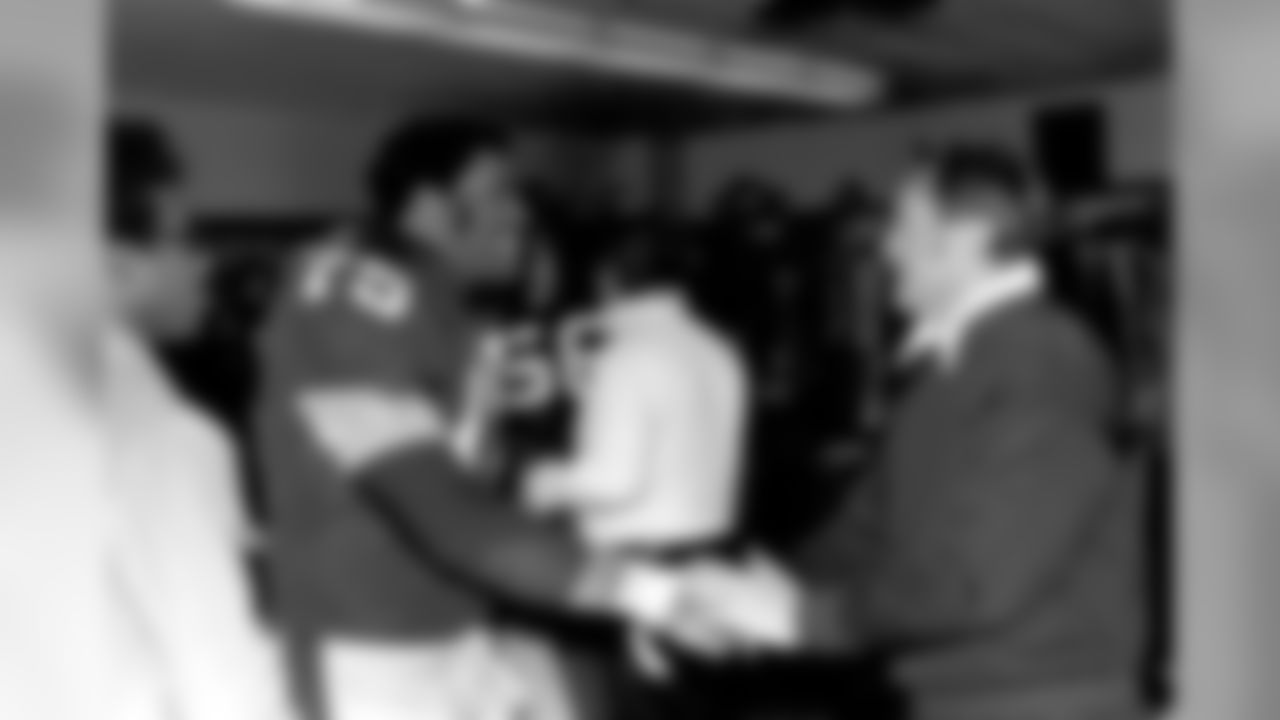

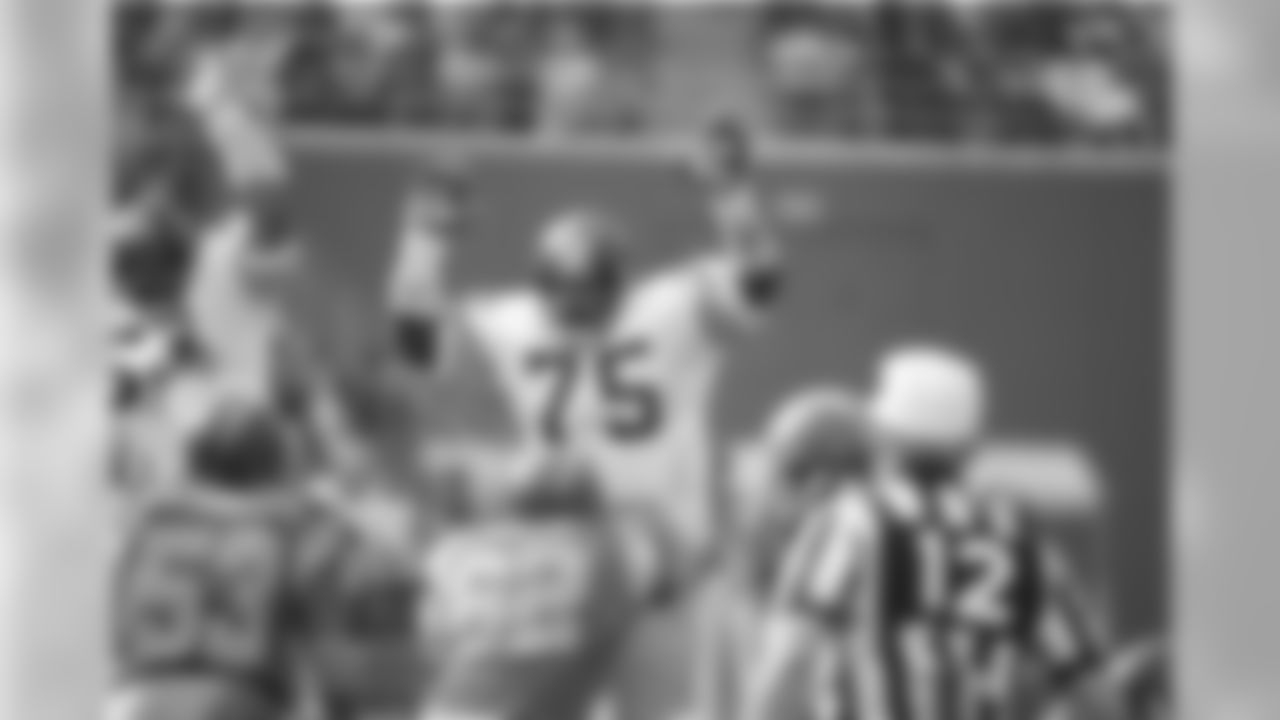
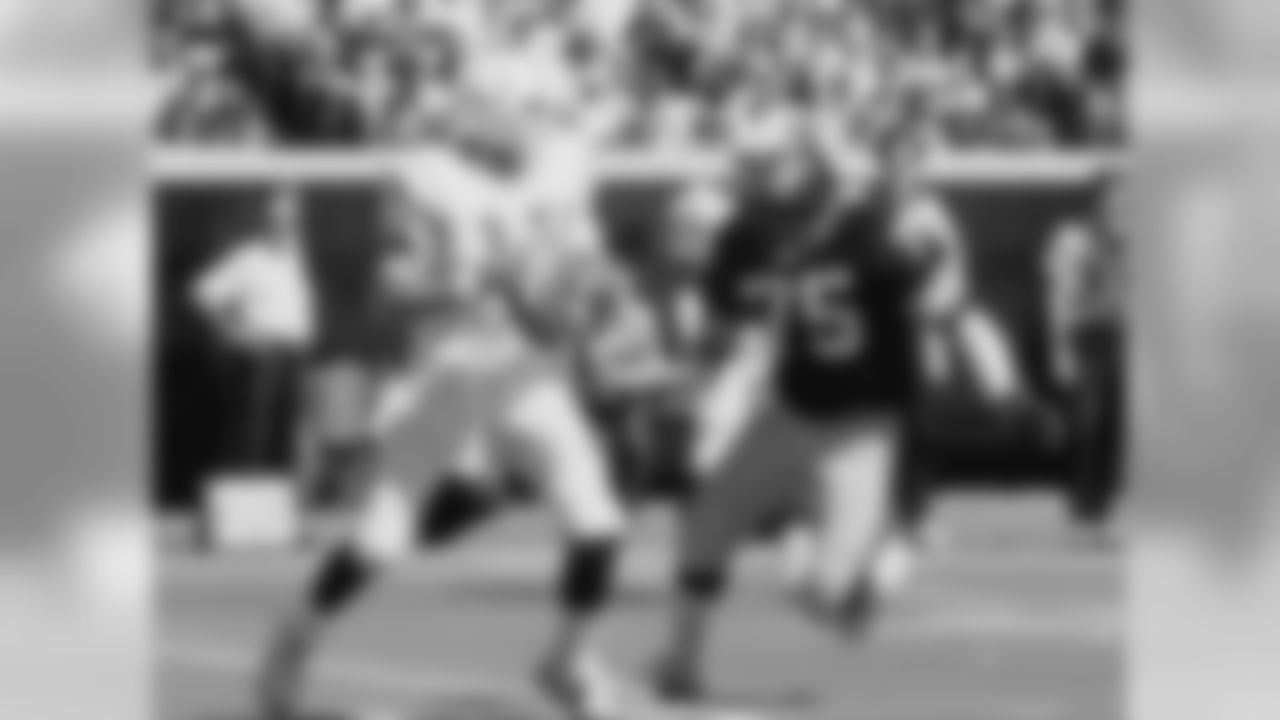

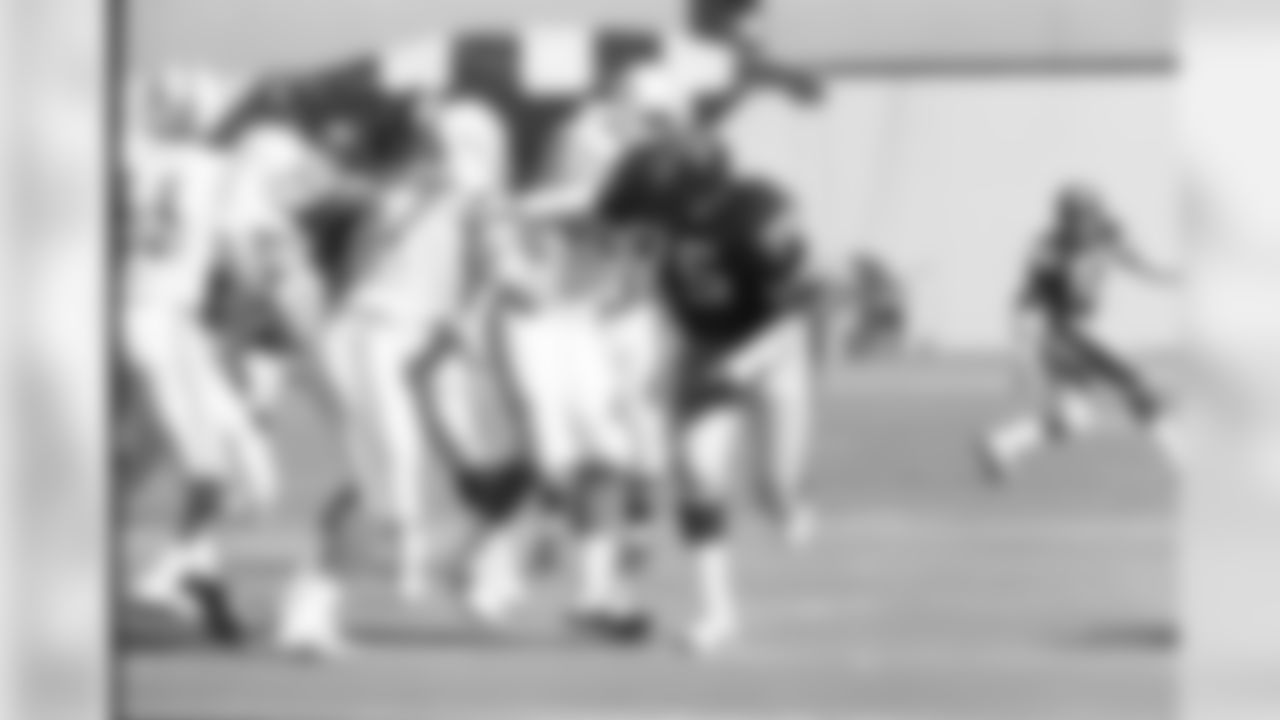
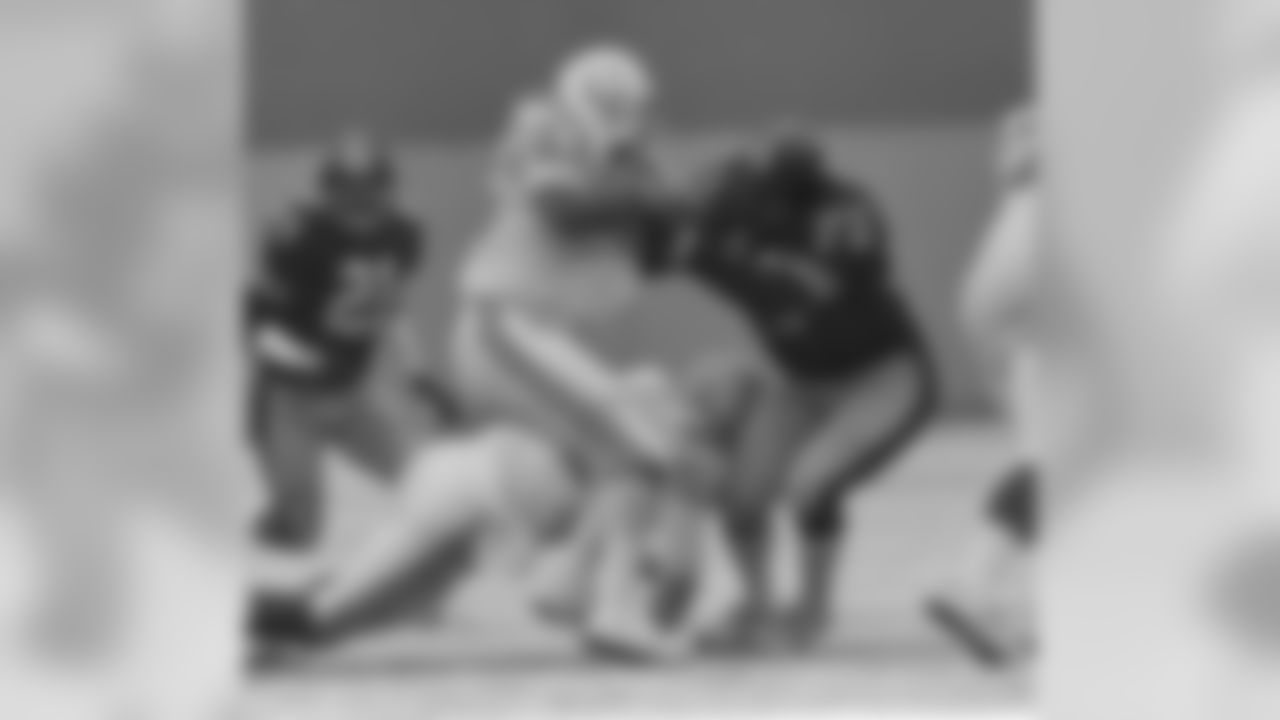
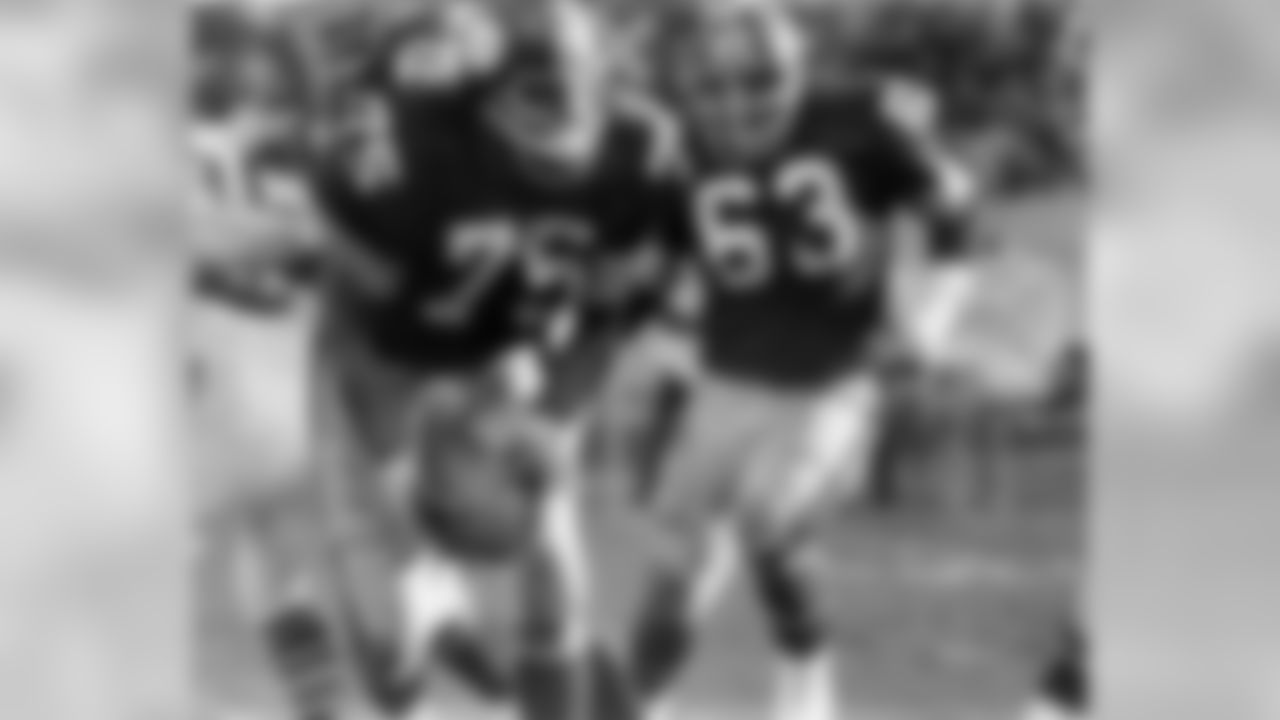






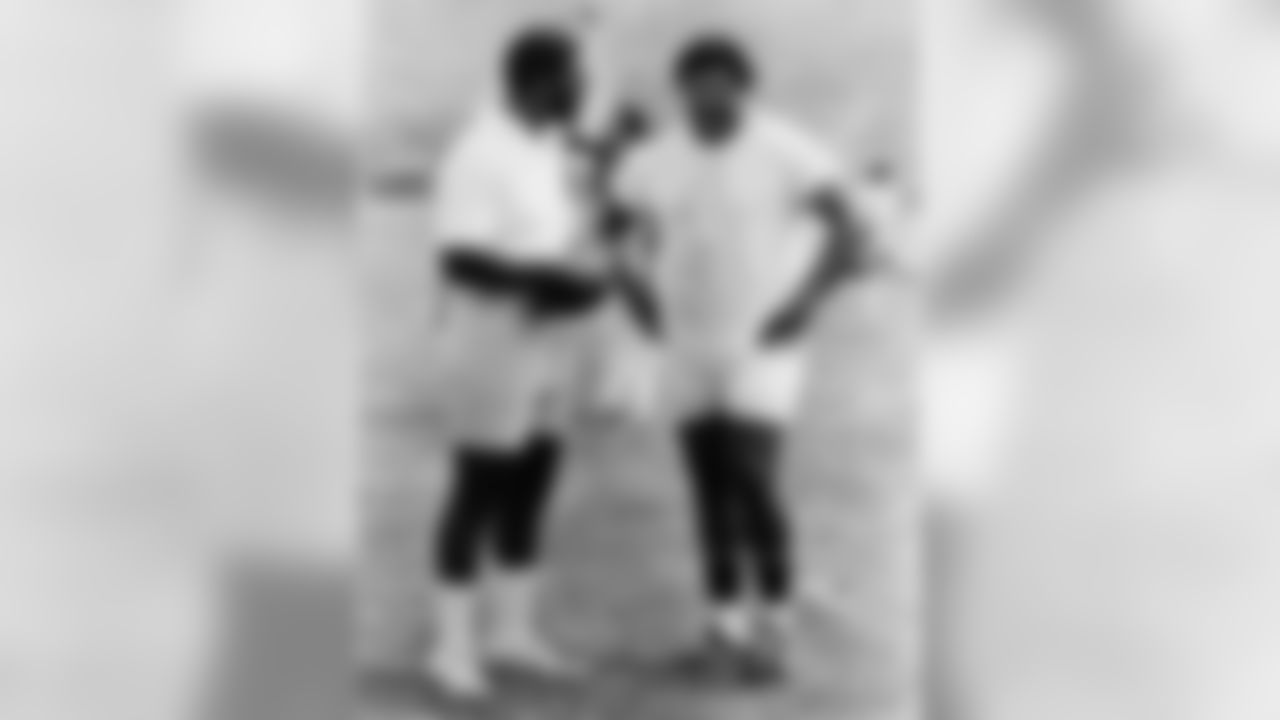
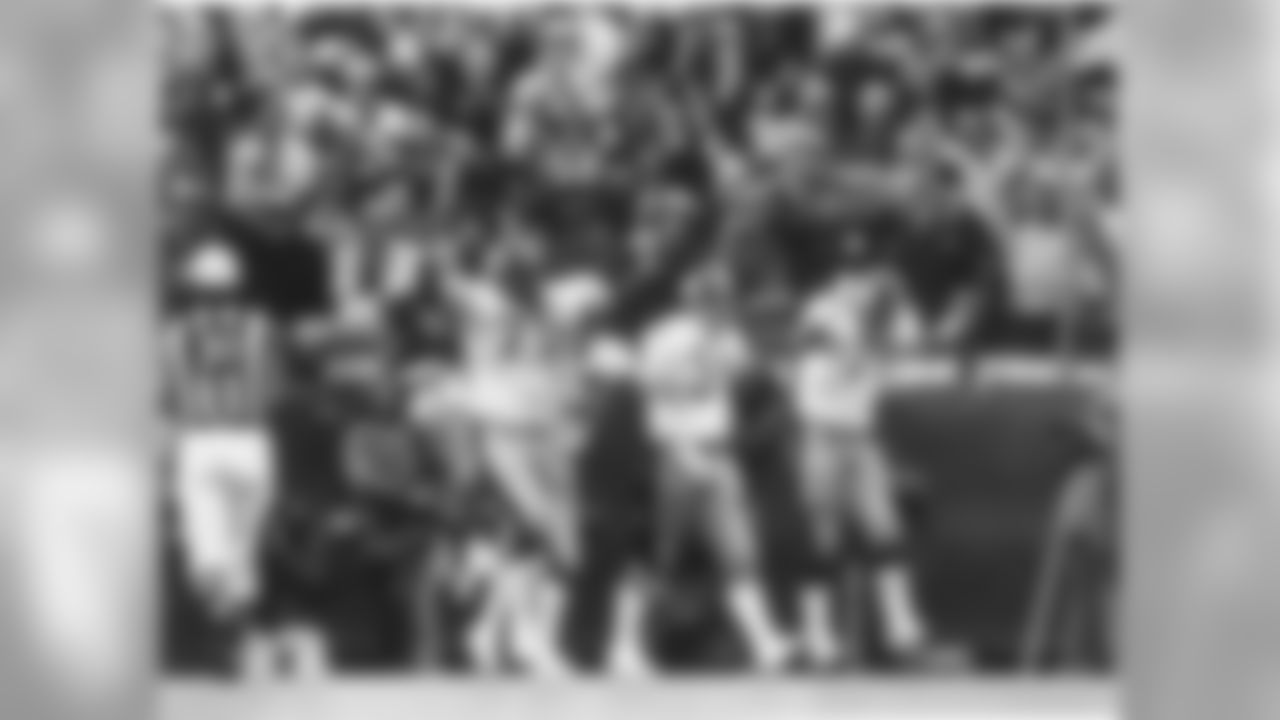
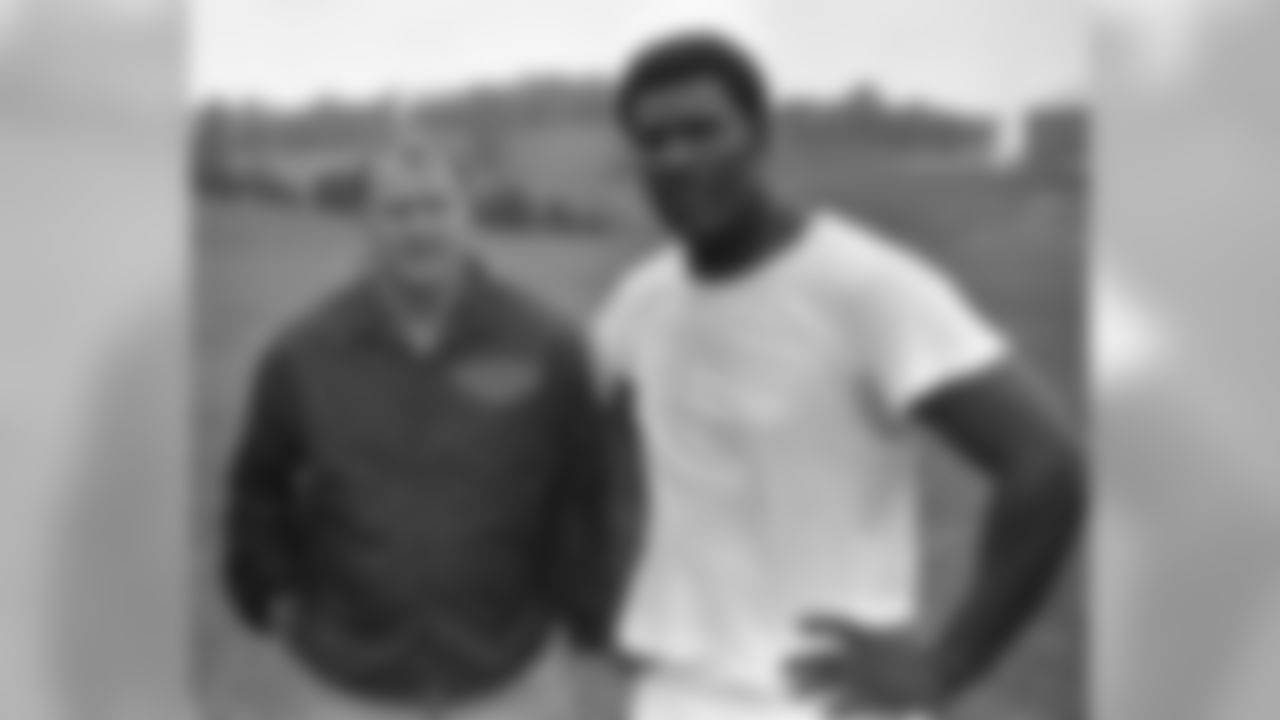
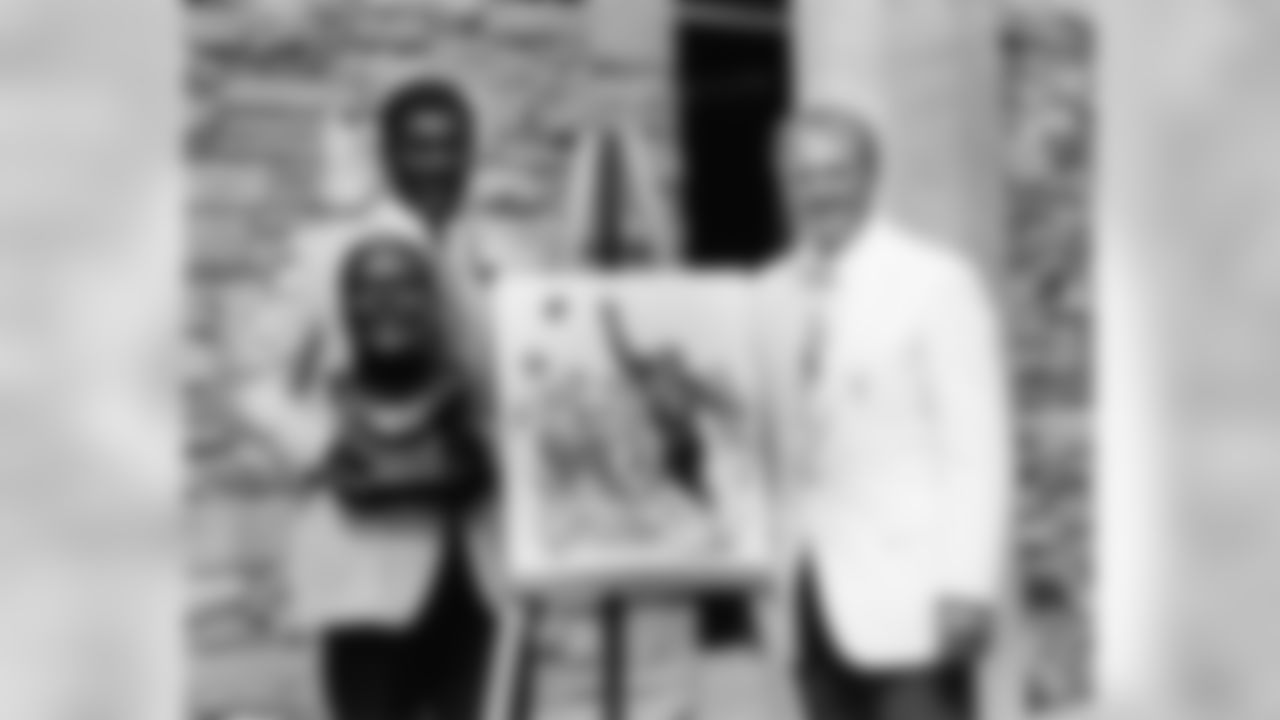
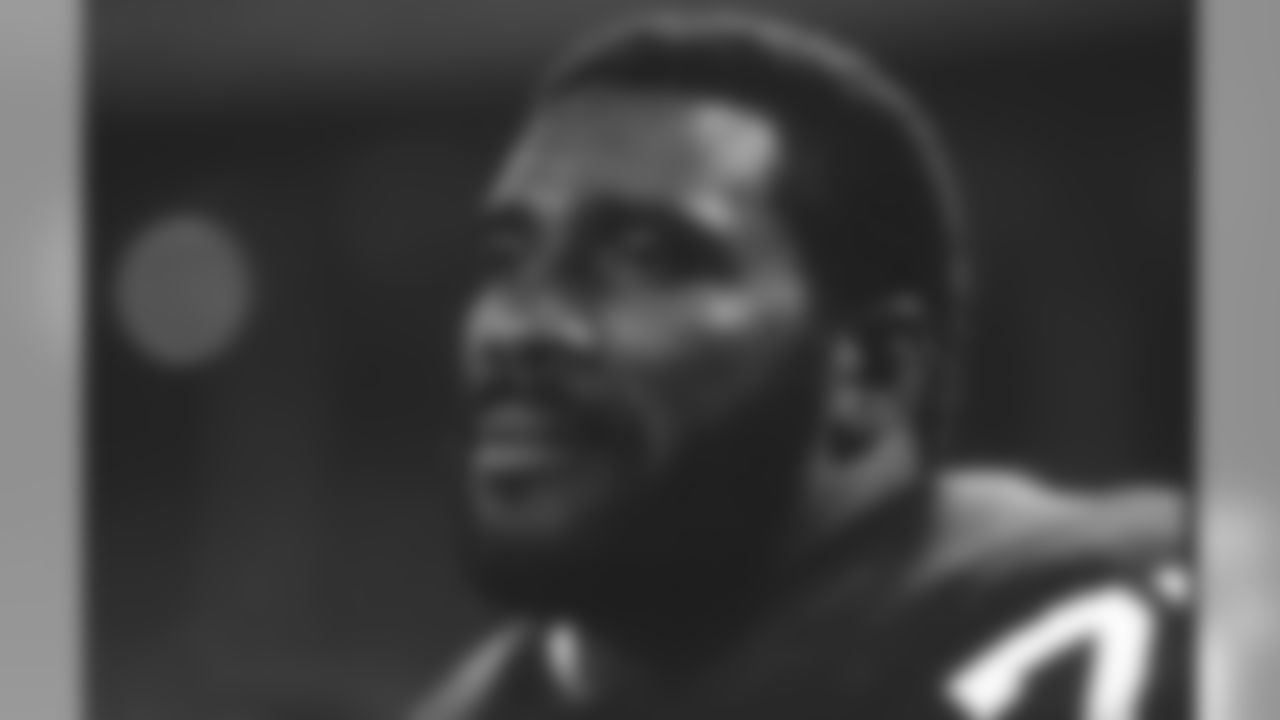

1969 – JOE GREENE**: Hall of Fame Class of 1987. The greatest player in franchise history. The most significant player in franchise history. The only player deserving to be on the Steelers' Mount Rushmore, along with Art Rooney Sr., Dan Rooney, and Chuck Noll. Greene was the NFL Defensive Rookie of the Year, a two-time winner of the NFL Defensive Player of the Year Award (1972 and 1974), and a five-time first-team All-Pro. His sixty-six sacks still put him fourth in franchise history, and Greene was an interior defensive lineman.
But here's a specific anecdote presented to attest to Joe Greene's greatness: It was December 1972, and the 9-3 Steelers were on their way to Houston for a game against the 1-11 Oilers. Sounds like a simple afternoon, but there were some other circumstances:
L.C. Greenwood and Sam Davis were out. Jon Kolb and Gerry Mullins had the flu; while Kolb played, Mullins only made it into the third quarter. Bruce Van Dyke pulled a calf muscle in the first quarter and was done for the day; Jim Clack injured an ankle and was done for the day. All six of those aforementioned players were starters. Craig Hanneman, Greenwood's backup, aggravated a knee injury and was done for the day; Dwight White injured a knee; Steve Furness injured an ankle. Ron Shanklin was injured in the first quarter and was done for the day; Terry Bradshaw dislocated a finger in the second quarter and was done for the day; and tight end Larry Brown, who would grow into an offensive tackle, was that day playing flanker.
The Steelers needed a hero, and Joe Greene stepped up. He had five sacks and blocked a short field goal attempt by the Oilers; he recovered one fumble and forced another, and those takeaways led to two Roy Gerela field goals. The Steelers won, 9-3, and Greene was responsible for nine of the points himself – six the Steelers scored and the three the Oilers did not.
If the Steelers lose that game to the Oilers – and in every previous year of their existence, the Steelers always lost those kinds of games because in December 1972 the team still had yet to win even the first division title in franchise history – they finish the season at 10-4, tied with Cleveland for the best record in the AFC Central Division. But based on a better division record, the Browns would have finished first and the Steelers second in the division, which then would have sent Oakland to Cleveland, and Pittsburgh to Miami for the first round of the 1972 AFC Playoffs. That would have meant no Immaculate Reception. Then who knows how the rest of the decade, and Steelers history, turn out? Four Super Bowl rings.
**
1970 – TERRY BRADSHAW**: Hall of Fame Class of 1989. It came down to the flip of a coin back in 1970, what with the Steelers and Chicago Bears tying for the worst record in the NFL in 1969 and the prize coming along with the first overall pick being a Louisiana Tech quarterback named Terry Bradshaw. On the advice of renowned horse-player Art Rooney Sr., the Steelers let the Bears call the toss of the coin, and for the 14th time that season the Chicago NFL team came up a loser. In the run-up to the draft, the Steelers were deluged with offers for the pick, and because the Steelers had traded away their No. 1 pick in six of the previous 12 drafts there was a lot of history indicating it again could be a possibility. The St. Louis Cardinals offered a package that contained cornerback Roger Wehrli, who was inducted into the Pro Football Hall of Fame in 2007. When presented with the St. Louis offer, Chuck Noll said, "This trade would get us to 7-7. I don't want to be 7-7."
If you're a guy who likes his quarterback to come up big in critical games, Terry Bradshaw is your guy. He was 14-5 as a starter in the playoffs, 4-0 in Super Bowls. His postseason passer rating was 83.0, and his 8.41 yards/attempt is the highest in NFL history among quarterbacks who have a comparable number of playoff starts. But in those four Super Bowls, Bradshaw had a passer rating of 112.8, and his yards/attempt in those games was an astonishing 11.9. Bradshaw wouldn't help you win your fantasy league, but he forced you to build a bigger trophy case. Four Super Bowl rings.
1972 – FRANCO HARRIS: Hall of Fame Class of 1990. At one point, Steelers founder Art Rooney Sr. was asked about fullback Franco Harris. "We didn't win until he got here," said Rooney about the franchise's No. 1 pick in the 1972 draft, "but after he got here ,we didn't lose very often."
In terms of coming up big in critical games, Harris is the running back version of Terry Bradshaw. In 19 playoff games, Harris carried 400 times for 1,556 yards (3.9 average) with 16 touchdowns, while also catching 51 passes for 504 more yards and another touchdown. Harris rushed for four touchdowns in four Super Bowl wins, and in being the MVP of Super Bowl IX Harris rushed for 158 yards on 34 carries (4.6 average) and scored the game's first touchdown on a 9-yard run. Harris is second in all-time postseason rushing yards to Emmitt Smith (1,556-1,586) but when receptions are added in, Harris leads Smith in yards from scrimmage (2,060-1,928). Four Super Bowl rings.
1974 – LYNN SWANN: Hall of Fame Class of 2001. Quality over quantity might be the simplest way to characterize Swann's career. His 907 receiving yards in 16 playoff games is more than he ever amassed over a whole regular season, and he also averaged 18.9 yards per catch in the postseason to go along with nine touchdowns. In 1975, Swann led the NFL with 11 touchdown receptions on only 49 catches, and then he capped that season by being voted the MVP of Super Bowl X by catching four passes for 161 yards, including the 64-yard touchdown that iced the outcome of the Steelers' 21-17 victory. Four Super Bowl rings.
1984 – LOUIS LIPPS: A playmaking receiver not lucky enough to play with either Terry Bradshaw or Ben Roethlisberger, Lipps led the NFL in punt returns as a rookie and then caught 59 passes for 1,132 yards (19.2 average) in 1985. In his first two seasons with the Steelers, Lipps scored 24 touchdowns receiving and returning.
1987 – ROD WOODSON: Hall of Fame Class of 2009. In terms of cornerbacks who weren't afraid to make a tackle, Woodson was the best of his era. In 10 seasons with the Steelers, Woodson was named first-team All-Pro five times and won the NFL Defensive Player of the Year Award in 1993. Woodson finished his career here with 13.5 sacks, 38 interceptions, 16 forced fumbles, and 21 fumble recoveries. He scored six defensive touchdowns, and added another four on returns.
1998 – ALAN FANECA: The best guard in franchise history, Faneca started 153 of the 158 games he played in a Steelers uniform. During his career here, Faneca was voted to seven Pro Bowls and was named first-team All-Pro six times. One Super Bowl ring.
2001 – CASEY HAMPTON: An underrated leader on Steelers teams that played in three Super Bowls and won two, Hampton was voted to five Pro Bowls. During his 13 seasons, the Steelers run defense was ranked among the NFL's top three 10 times, and it was No. 1 four of those times. Two Super Bowl rings.
**
Pittsburgh Steelers Troy Polamalu had a lot of defining plays throughout his career, take a look at some.
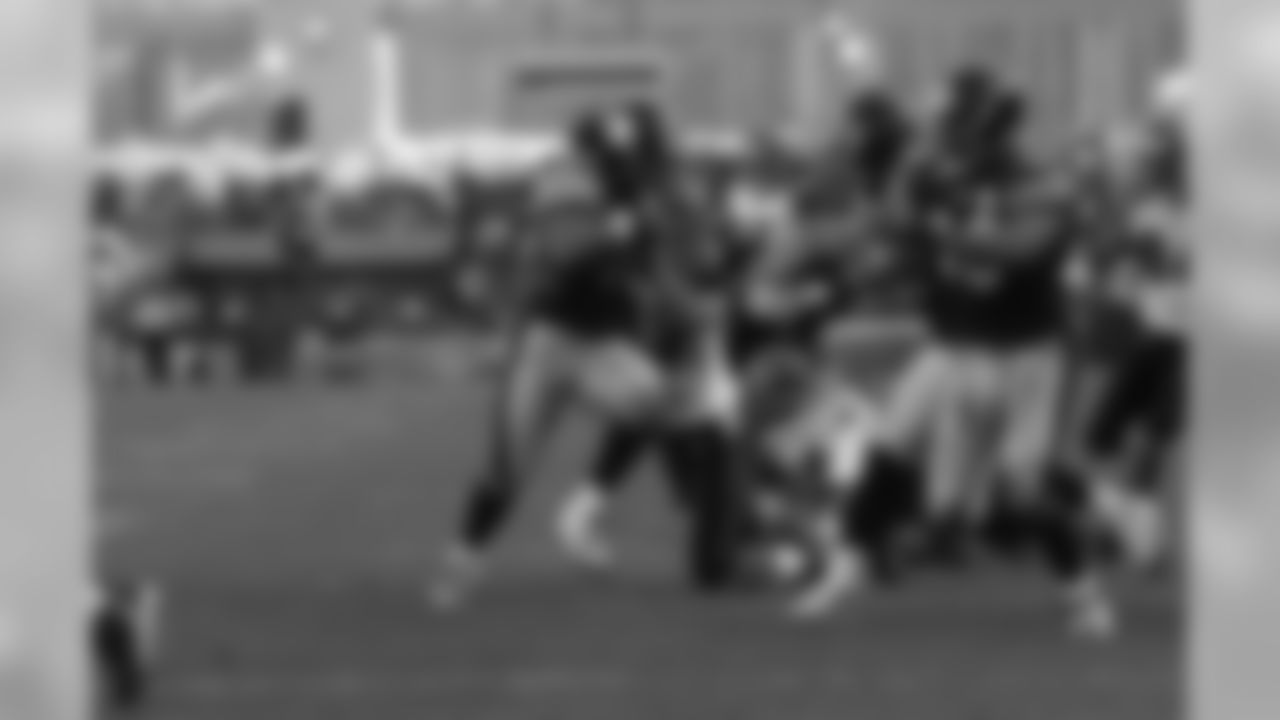








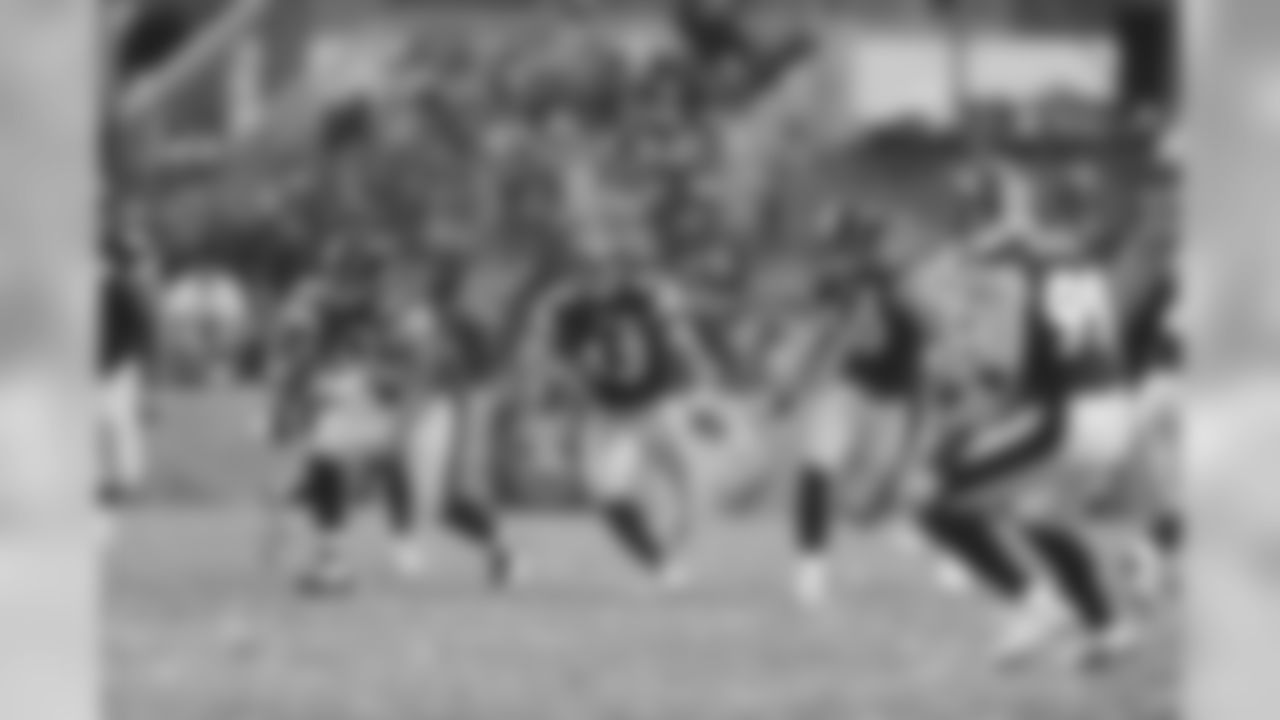
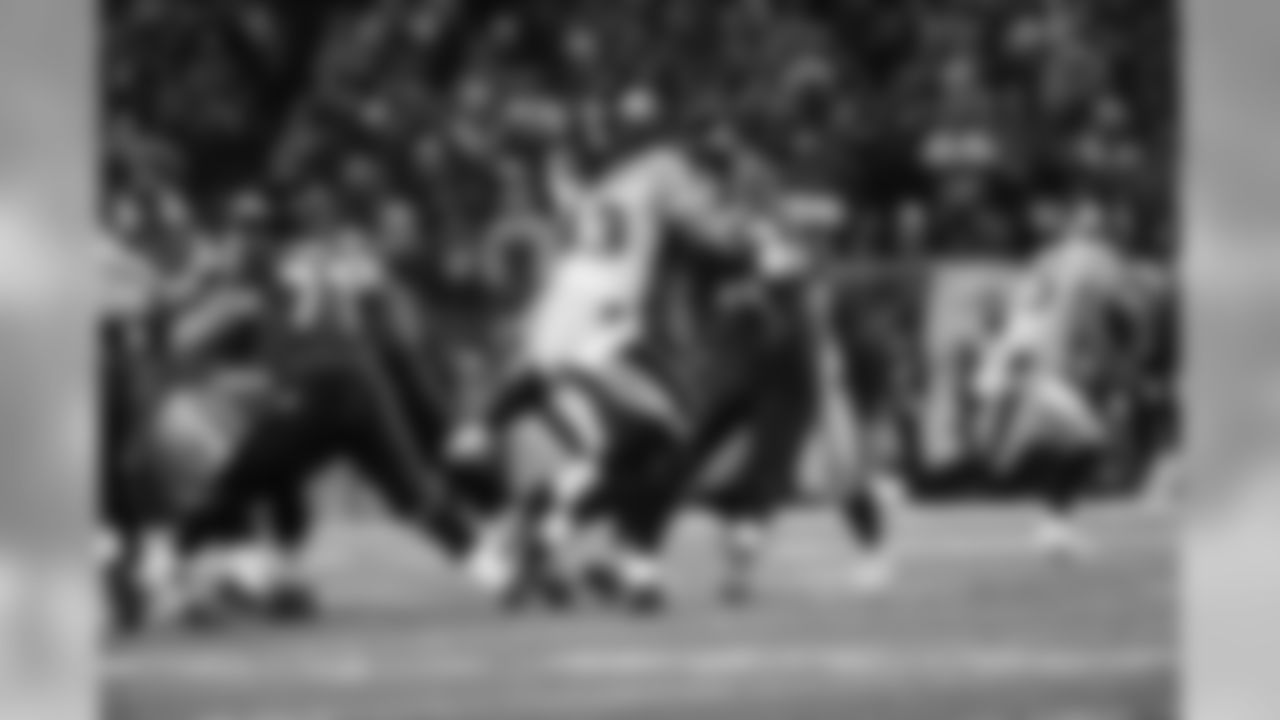





2003 – TROY POLAMALU**: The record will show that Polamalu finished his career with 32 interceptions, 96 passes defensed, 12 sacks, 13 forced fumbles, and seven fumble recoveries in 142 regular season starts for the Steelers, but when some perspective is added his contributions are better able to be appreciated. Suffice it to say that at his best, Troy Polamalu was an all-time great. He was voted NFL Defensive Player of the Year in 2010, an honor capping a three-season span in which he recorded 17 interceptions in 35 starts for a defense that finished No. 1, No. 5, and No. 2 in the NFL. In the 2008 AFC Championship Game, his pick-six stuck a dagger in the Ravens with four minutes left to send the Steelers to the Super Bowl and also clinch a 3-0 sweep of a Baltimore team that had lost only two other games all season. He was named first-team All-Pro four times. Two Super Bowl rings.
2004 – BEN ROETHLISBERGER: His 13-0 record as a rookie stamped him as a winner, and Roethlisberger today is one of only 11 quarterbacks to win multiple Super Bowls as a starting quarterback. His playoff record is 10-4, 2-0 in Super Bowls, and Roethlisberger has completed 60.6 of his postseason passes, with 20 touchdowns and a rating of 83.7. And he's still writing his history.
In the 2014 regular season NFL quarterback rankings, Roethlisberger was fourth in attempts, third in completions, third in completion percentage, tied-for-first in yards, third in average gain, seventh in touchdowns, fourth in interception percentage, and third in passer rating. No one else in the league ranked in the top 10 in each of those categories. That same year Roethlisberger also became the first player in NFL history with back-to-back six-touchdown pass games – against the Colts on Oct. 26 and then the Baltimore Ravens the following weekend – and the 522 yards he amassed against Indianapolis made him the first player in history with two 500-yard passing games in a career.
But if there's one milestone he reached in 2014 that defines what Ben Roethlisberger is all about as a player it's that he joined Tom Brady, Joe Montana, and Terry Bradshaw as the only quarterbacks of the Super Bowl era to win at least 100 games in their first 150 career starts. Two Super Bowl rings.
**
A look through the archives at Heath Miller's rookie year as a Steeler.




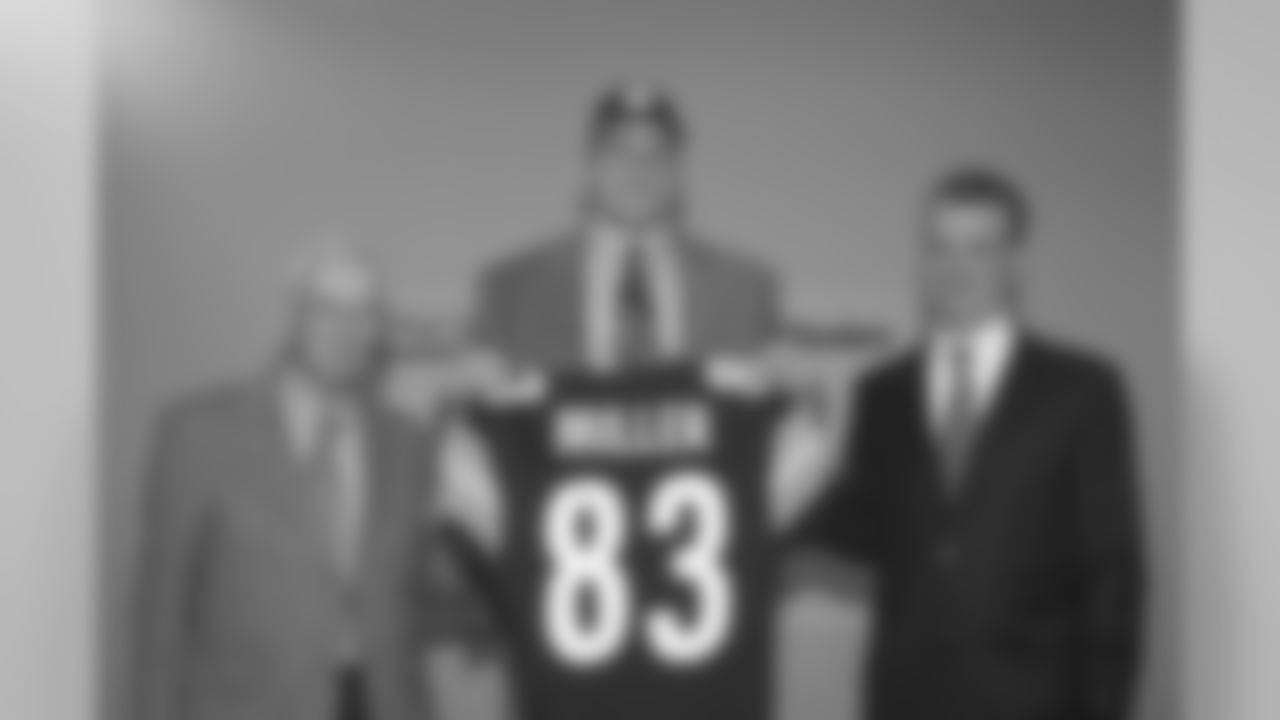



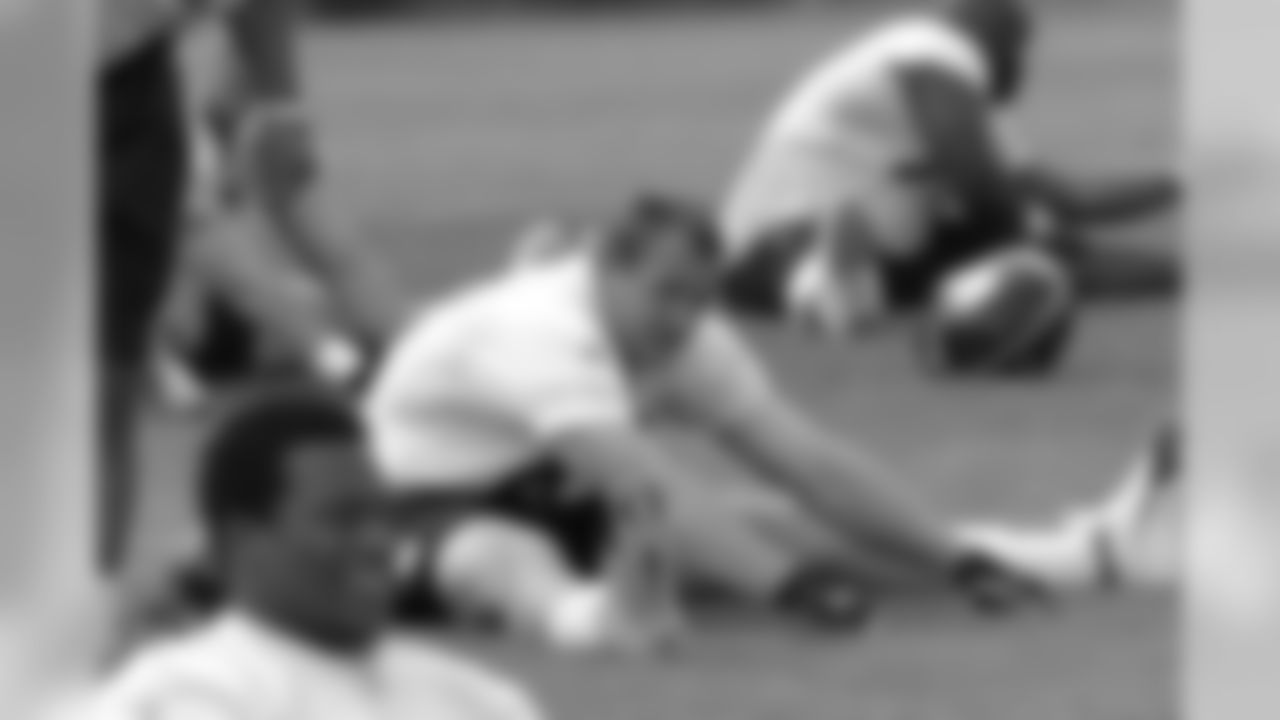

























2005 – HEATH MILLER**: The best tight end in franchise history, Miller has handled all facets of his position like few others in the NFL. Miller retired in 2016 as the Steelers' all-time leader in receptions (592), receiving yards (6,569), and receiving touchdowns (45) by a tight end. Among all Steelers' position players, he ranks second in career receptions, fourth in receiving yards and receiving touchdowns, and sixth in scrimmage yards (6,577). Miller is one of four players to record 500 receptions, one of five players to record 6,000 receiving yards and one of five players to record 40 receiving touchdowns in team history.
Miller, who played 11 seasons with the Steelers, is one of 12 tight ends in NFL history to reach 6,000 career receiving yards, and at the conclusion of the 2015 season, his 592 receptions were the sixth-most in NFL history by a tight end, and his 6,569 career receiving yards were the ninth-most in NFL history by a tight end. When Miller retired, General Manager Kevin Colbert said, "On the field we'll miss the body, but it's also part of our soul that's leaving. Even though Heath is not a man of many words, he was definitely a respected leader, not only within his position group but for this entire team and this organization." Voted to the Pro Bowl twice. Two Super Bowl rings.
Who's on your Steelers #UltimateDraft board? Vote now for your chance to win great prizes!














